When I first read about the area called the Hudson River Valley and the large estates and mansions of famous and rich people in this part of the US state of New York, I learned that there was also the house of the former US President Franklin D. Roosevelt here that was open for visits as well.
Since, generally speaking, I don’t like politics and I’m far from being impressed by politicians, I asked myself if I was interested at all in looking at the house of an American president. I had a very clear response: “Absolutely not.” But, then I thought this through. This president was very important for the USA and the American people, and since I was planning to travel around a part of this huge country and by the rule I very much love the countries I visit and the people who live in them, I realised that my response was hasty. If I respected the country I was planning to go to and the people who lived there, and I did, and if I wanted to learn more about them through my travels, and I did, then the minimum I could do was to visit the house in which President Franklin Delano Roosevelt (1882-1945) was born and lived. I did not regret it.
To start with, according to our plan, my friend Daniela and I went early to the Home of Franklin D. Roosevelt National Historic Site because we wanted to be a part of the first group created in situ. This was necessary because we had a limited time on this day – later that day, Daniela had her return flight to Texas where she lives.
So, we bought the tickets at the Visitor Centre and that meant we had half an hour before the tour of the house. We headed slowly in that direction, but to start with I found it very interesting to look at some local animals.
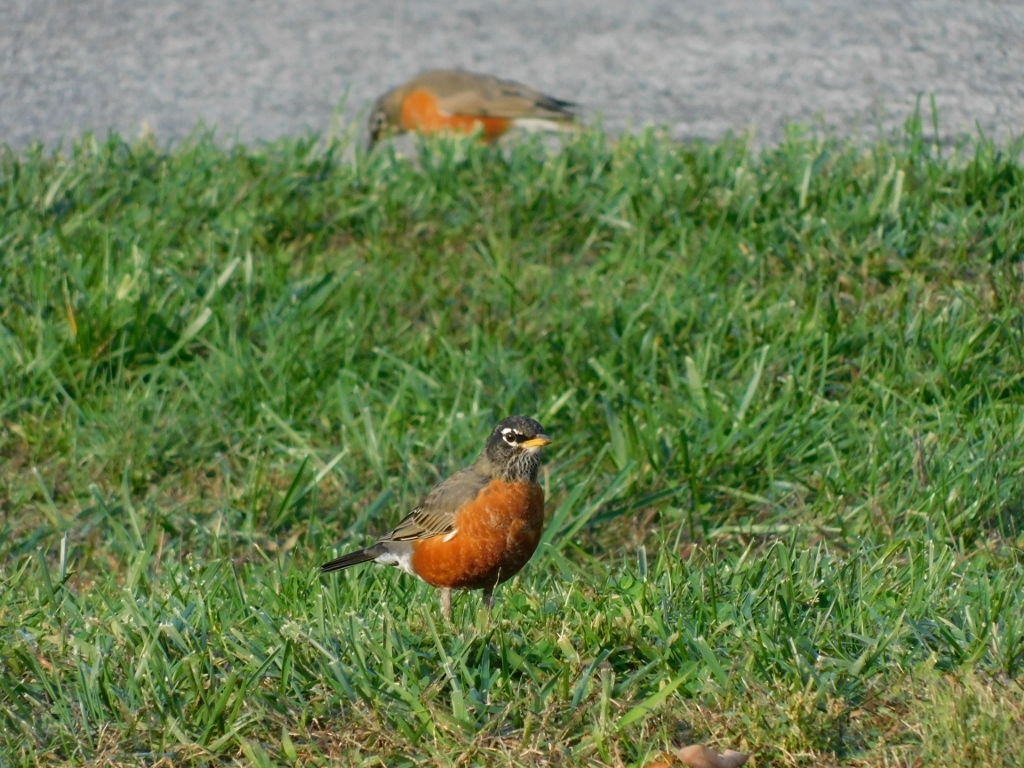 American Robin (Turdus migratorius)
American Robin (Turdus migratorius)
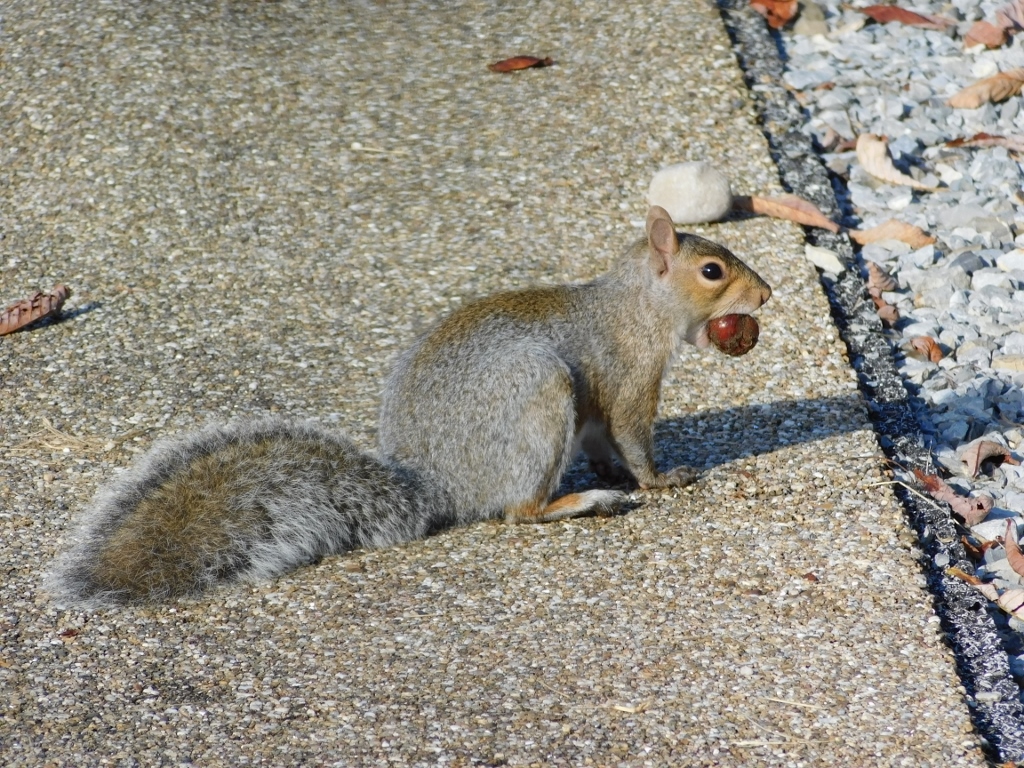 Eastern gray squirrel (Sciurus carolinensis)
Eastern gray squirrel (Sciurus carolinensis)
And now I could focus more on the Springwood Estate, which was the original name for this national historic site and which continues to be the name of the house.
So, Franklin Roosevelt, later the 32nd American president, was born here in 1882, in the house that is situated on this estate. Of all the American presidents, he was in the office the longest, since he did full three terms, while at the beginning of the fourth one he passed away. That means that he was in the office for over 12 years! He is also the only American president with such long term of duty, for he was the only one with more than two mandates. Under the law, this can never happen again, since in 1951, a constitutional amendment was formally ratified and it sets the limit that one person can be in the office for two mandates at the most, i.e., for a maximum of eight years.
After the passing of President Roosevelt, in 1945, the estate of almost 13.5 ha was turned into the Home of Franklin D. Roosevelt National Historic Site. Today, you can visit different buildings and parts of the estate, and it is also possible to visit the estate following a couple of walking trails since the access is permitted longer than the working hours of the visitor centre, for instance, practically from sunrise to sunset.
We headed for the Springwood house following a path alongside a garden and a little farther we could see a structure that used to be the Coach House and Stables (presumably for horses).
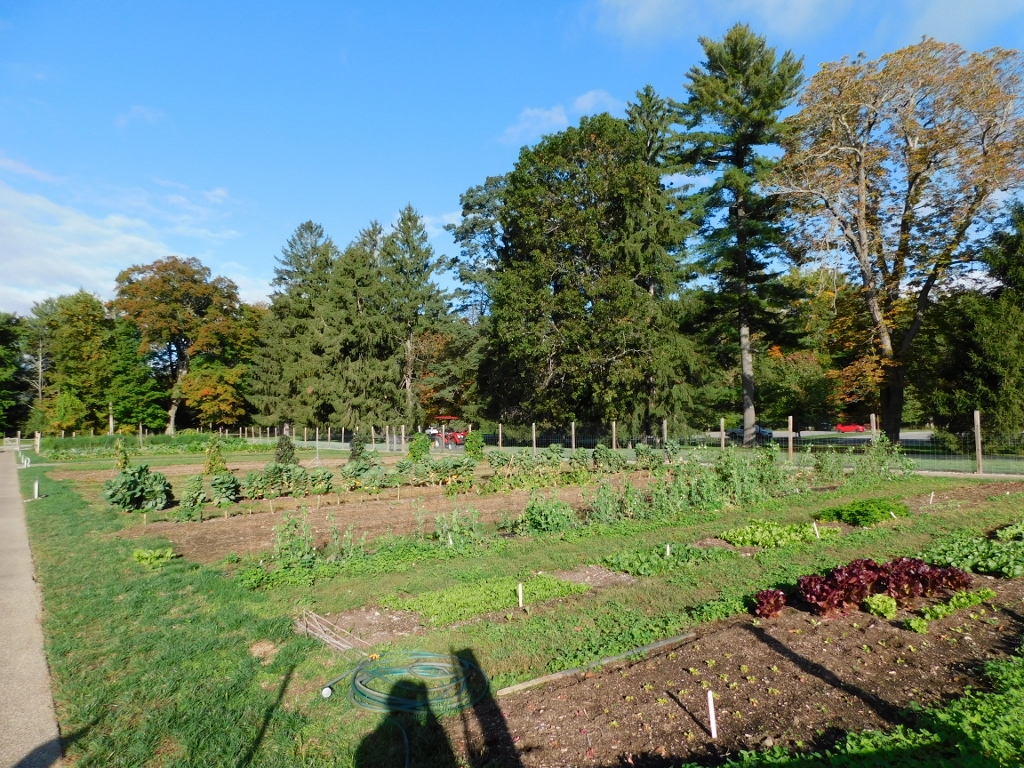 Home of Franklin D. Roosevelt National Historic Site, a detail
Home of Franklin D. Roosevelt National Historic Site, a detail
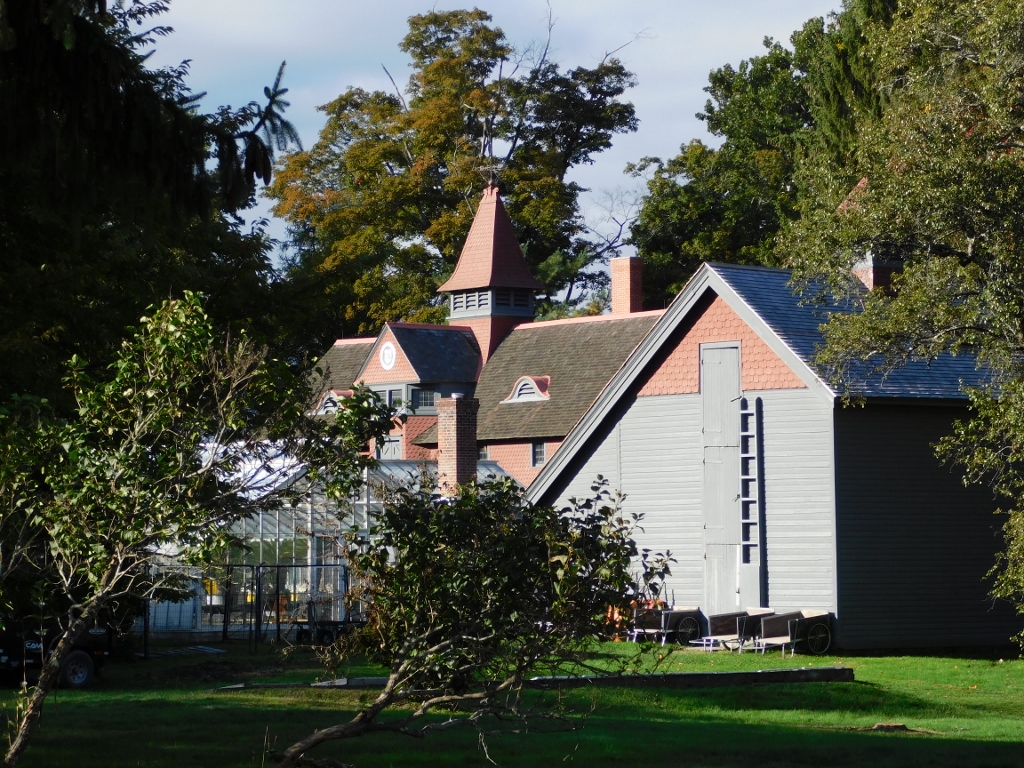 Home of Franklin D. Roosevelt National Historic Site, a detail
Home of Franklin D. Roosevelt National Historic Site, a detail
On the left-hand side we walked past the Franklin D. Roosevelt Library and Museum.
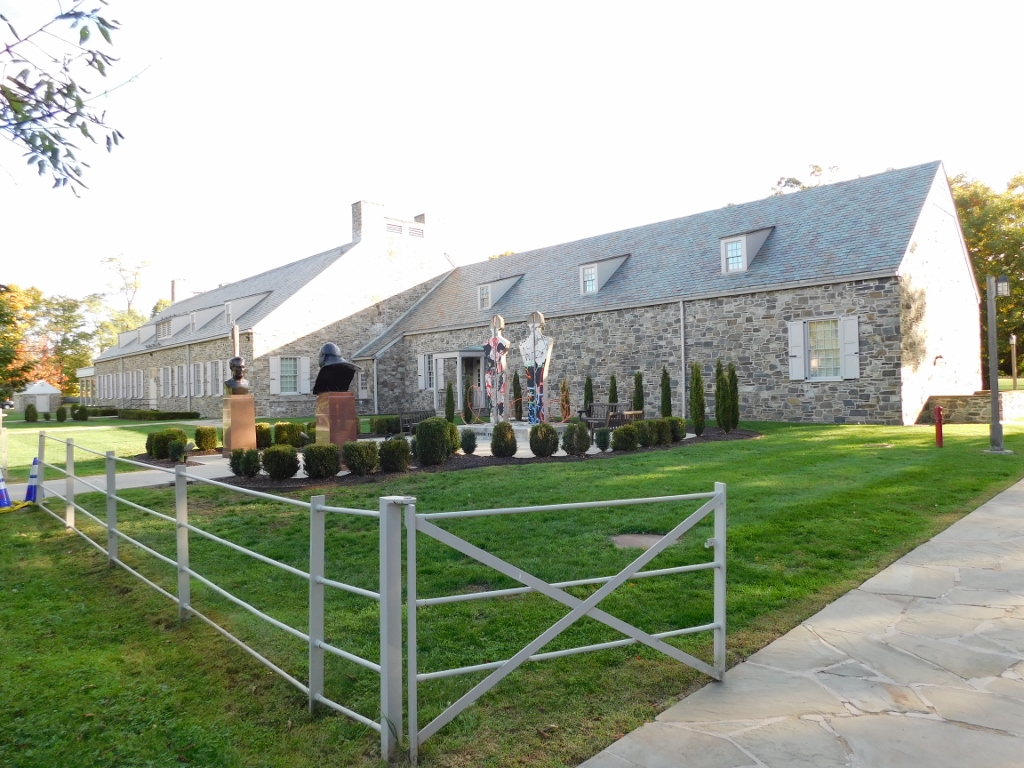 Home of Franklin D. Roosevelt National Historic Site, a detail
Home of Franklin D. Roosevelt National Historic Site, a detail
It is interesting that the library was built in 1939-1940, i.e., during the life of President Roosevelt who was himself actively involved in the whole project. The library was opened in 1941. Namely, in 1939, Roosevelt donated all of his personal and presidential documents to the federal government, since he maintained that the presidential documents constituted an important part of heritage and that they should be accessible to the public. For this reason, there was a need to have a place where all of that would be stored. Then Roosevelt allocated a part of his estate in the town of Hyde Park (precisely where I was doing the sightseeing right now) in order to have a building for this need constructed. This is the first presidential library in the USA and since then it has become common that the American presidents found their presidential libraries, all under the auspices of the National Archives and Records Administration.
In the photo above, that shows the west side of the library, it is possible to see two busts – a bust of President Roosevelt and a bust of the British Prime Minister Winston Churchill. They were placed on the spot called the Freedom Court.
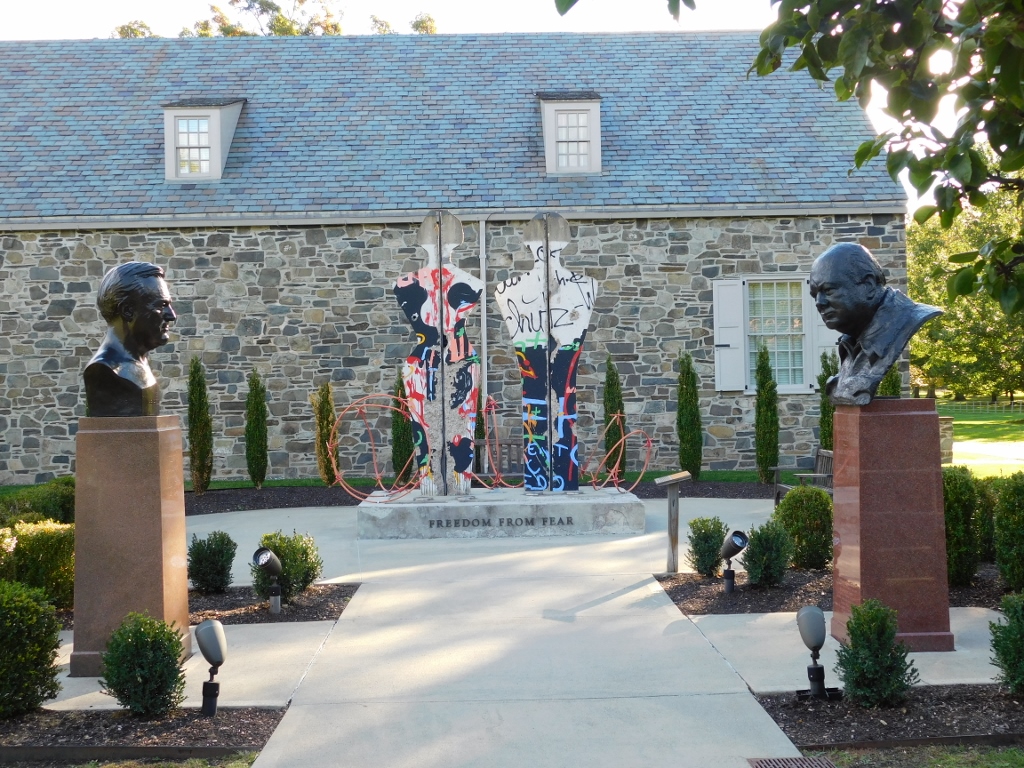 Home of Franklin D. Roosevelt National Historic Site, a detail
Home of Franklin D. Roosevelt National Historic Site, a detail
Namely, these two statesmen cooperated intensively during WWII and in that time they met several times, some of which meetings were held right here, at the home of Roosevelt in Hyde Park.
The path that leads towards the house then passes by the Rose Garden and this is where the visitor should enter the rose garden that is surrounded by a tall hedge. The reason for this is that President Roosevelt was not only born at this estate that was his true home throughout his life, but he was also buried here in 1945. Later, in 1962, his famous wife, Eleanor Roosevelt, was buried next to him.
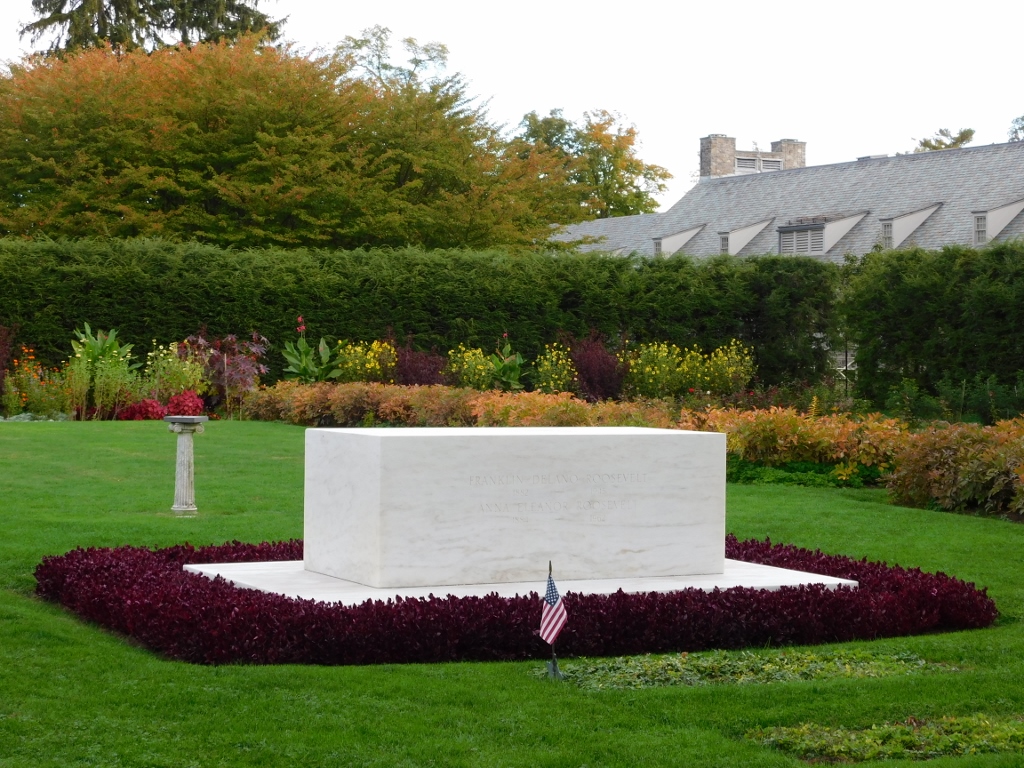 Home of Franklin D. Roosevelt National Historic Site, a detail
Home of Franklin D. Roosevelt National Historic Site, a detail
And now, Daniela and I got in front of the house where we had to wait for a short while until the whole group gathered up.
 Home of Franklin D. Roosevelt National Historic Site, a detail
Home of Franklin D. Roosevelt National Historic Site, a detail
While we were waiting, first I took the opportunity to take a photo of the park in front of the house and then some people belonging to the same group as us came as well, so I asked them to take a photo of the two of us.
 Home of Franklin D. Roosevelt National Historic Site, a detail
Home of Franklin D. Roosevelt National Historic Site, a detail
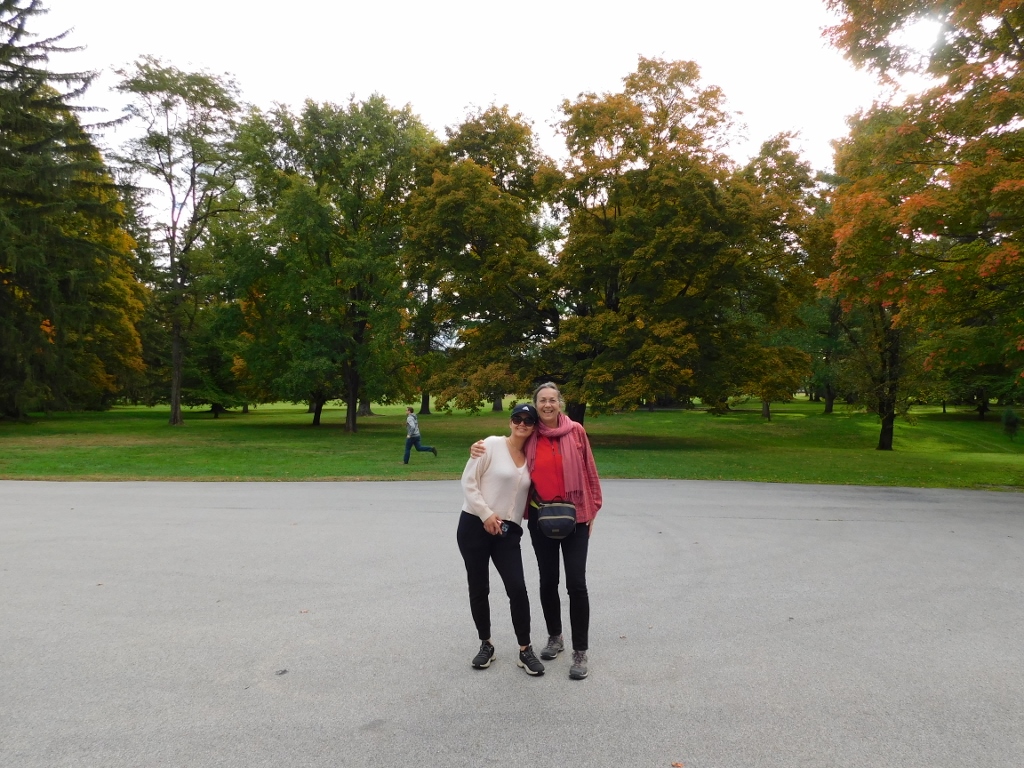 Daniela and I in front of the home of Franklin D. Roosevelt
Daniela and I in front of the home of Franklin D. Roosevelt
As we had a little more time before the tour started, I took that time to walk a little towards the Coach House and Stables, and also to the other side and a splendid meadow that from the plateau where the house was built descends down towards the bank of the Hudson River.
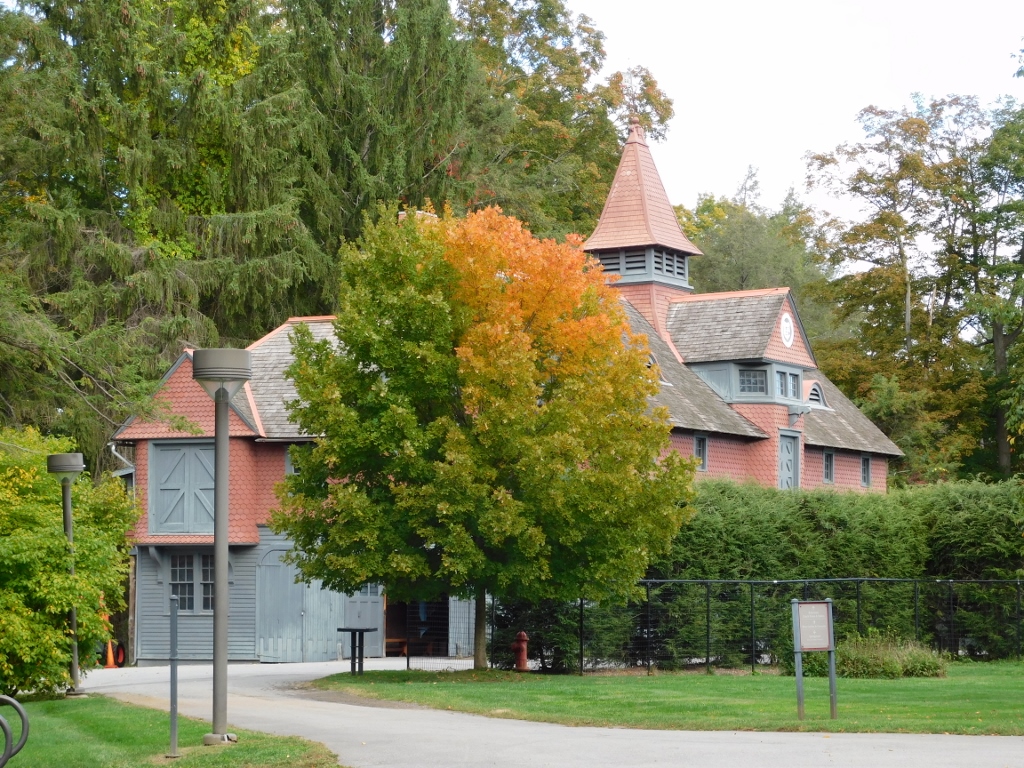 Home of Franklin D. Roosevelt National Historic Site, a detail
Home of Franklin D. Roosevelt National Historic Site, a detail
 Home of Franklin D. Roosevelt National Historic Site, a detail
Home of Franklin D. Roosevelt National Historic Site, a detail
If you look up-close the photo above, you can discern a bench at the end of the flat section covered by green grass. There is also a sign saying that Roosevelt’s father bought a property of around 44.5 ha back in 1867 and that both him and his son loved the vista that extends from the south lawn, as this area is called. In the past, the trees closer to the river were shorter and thus the river could be seen better, but even today, the view is exceptionally nice.
 Home of Franklin D. Roosevelt National Historic Site, a detail
Home of Franklin D. Roosevelt National Historic Site, a detail
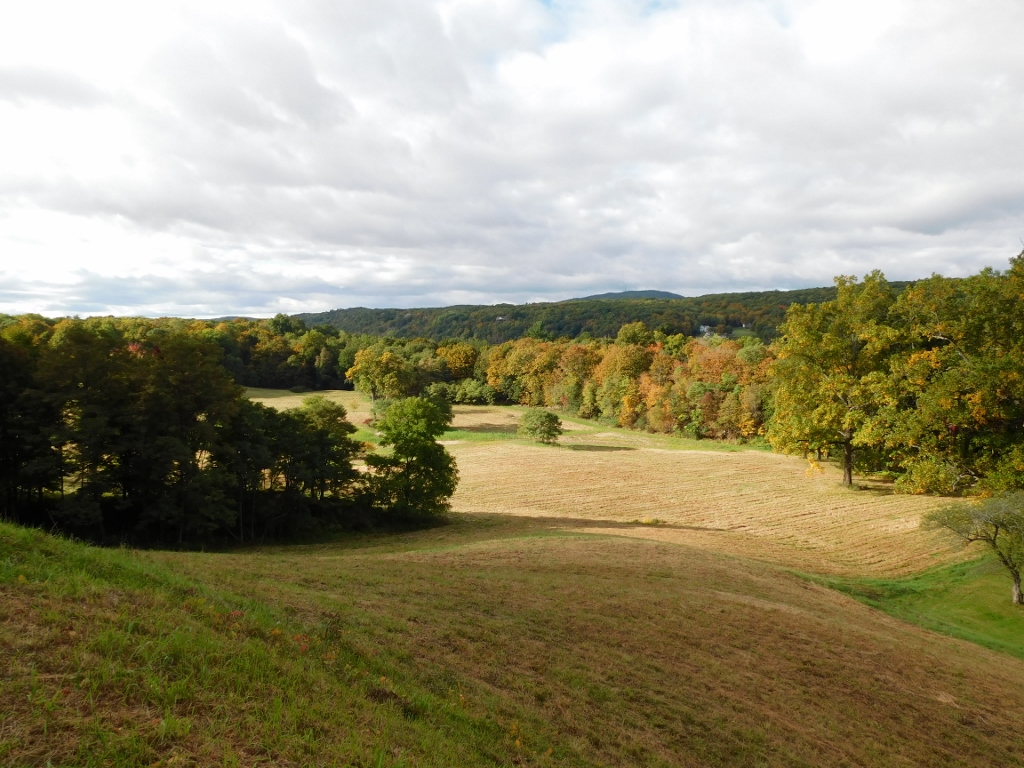 Home of Franklin D. Roosevelt National Historic Site, a detail
Home of Franklin D. Roosevelt National Historic Site, a detail
As for the house, the original version that was built here was slightly different, but over time it was precisely Franklin Roosevelt that added various parts in order to provide sufficient space for his large family (he had six children). There were also some modifications done in order for the house to be able to support his political career and ambitions to a larger degree.
The tour of the house first takes you through the ground floor rooms. You start with the spacious Entrance Hall.
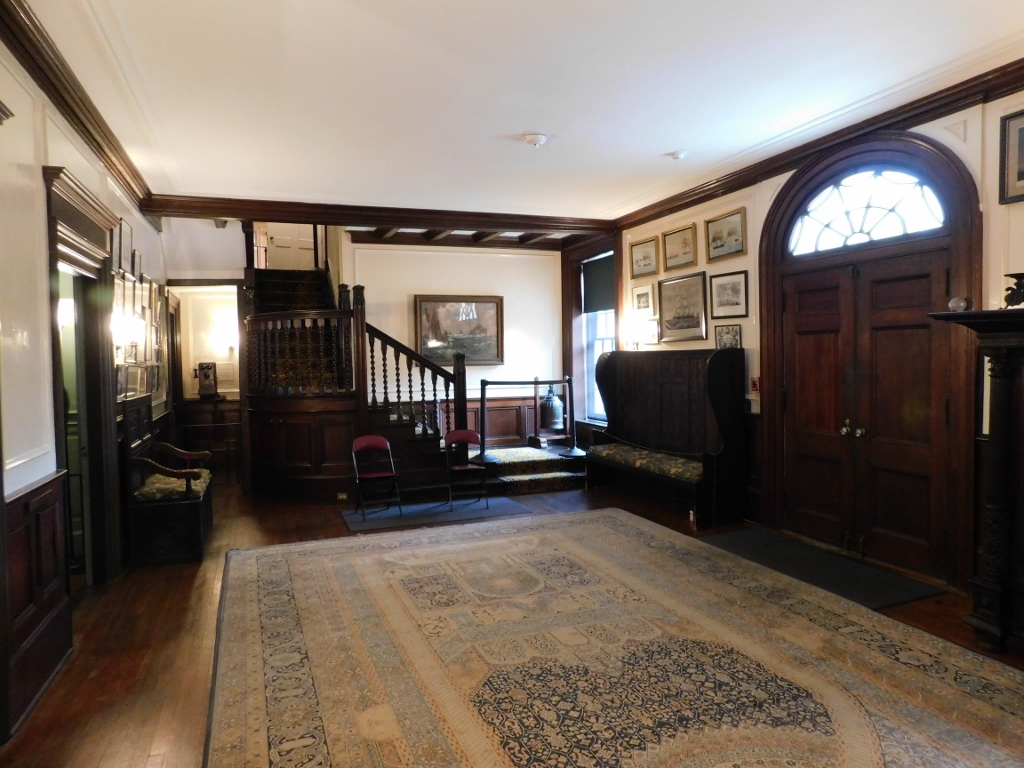 Home of Franklin D. Roosevelt: Entrance Hall
Home of Franklin D. Roosevelt: Entrance Hall
The whole house is full of details linked to the life primarily of President Roosevelt, such as some naval prints that he personally selected to decorate the walls of the house and various collections that he used to love to make as a boy. There are certainly some parts of the household items as well that even his father bought. Here, in the entrance hall, I took a photo of only a few of the numerous details.
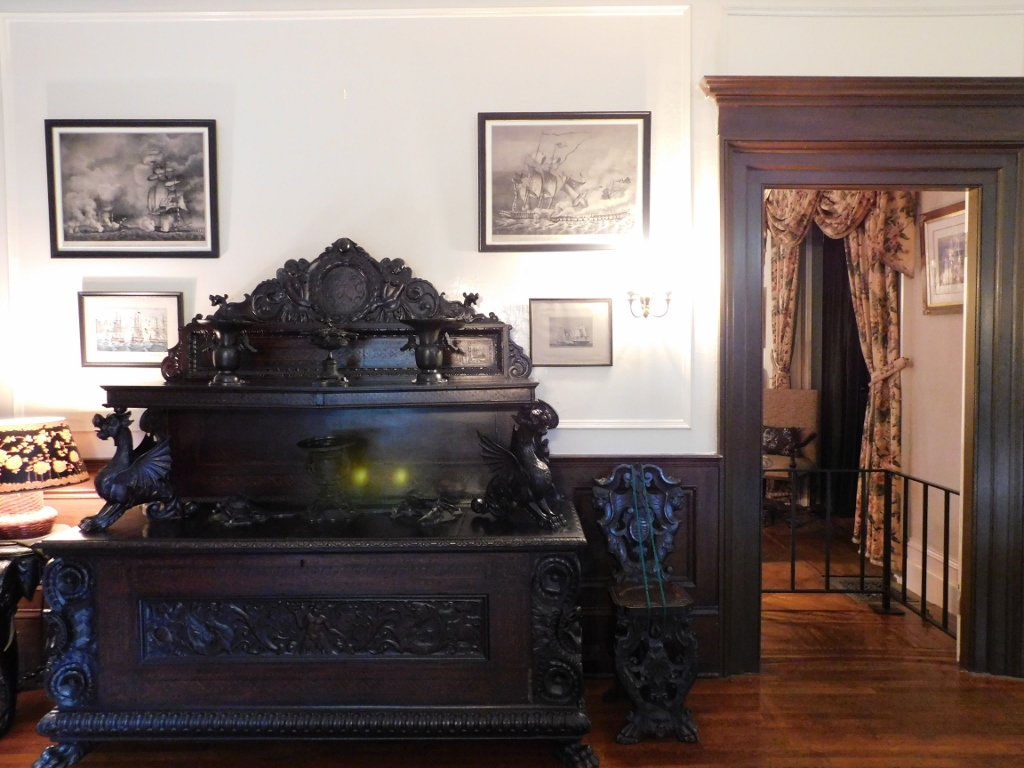 Home of Franklin D. Roosevelt: Entrance Hall, a detail
Home of Franklin D. Roosevelt: Entrance Hall, a detail
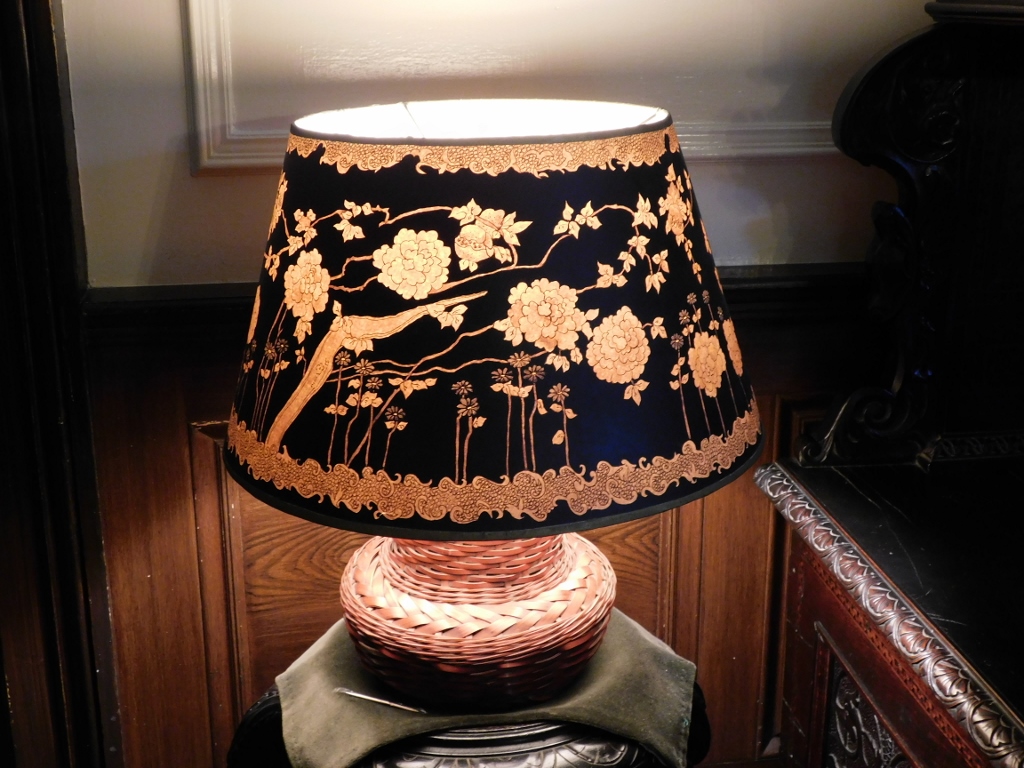 Home of Franklin D. Roosevelt: Entrance Hall, a detail
Home of Franklin D. Roosevelt: Entrance Hall, a detail
The main rooms accessed from the entrance hall are the Library, the Music Room, often called the Dresden Room on account of a chandelier bought in Dresden, and the Dining Room.
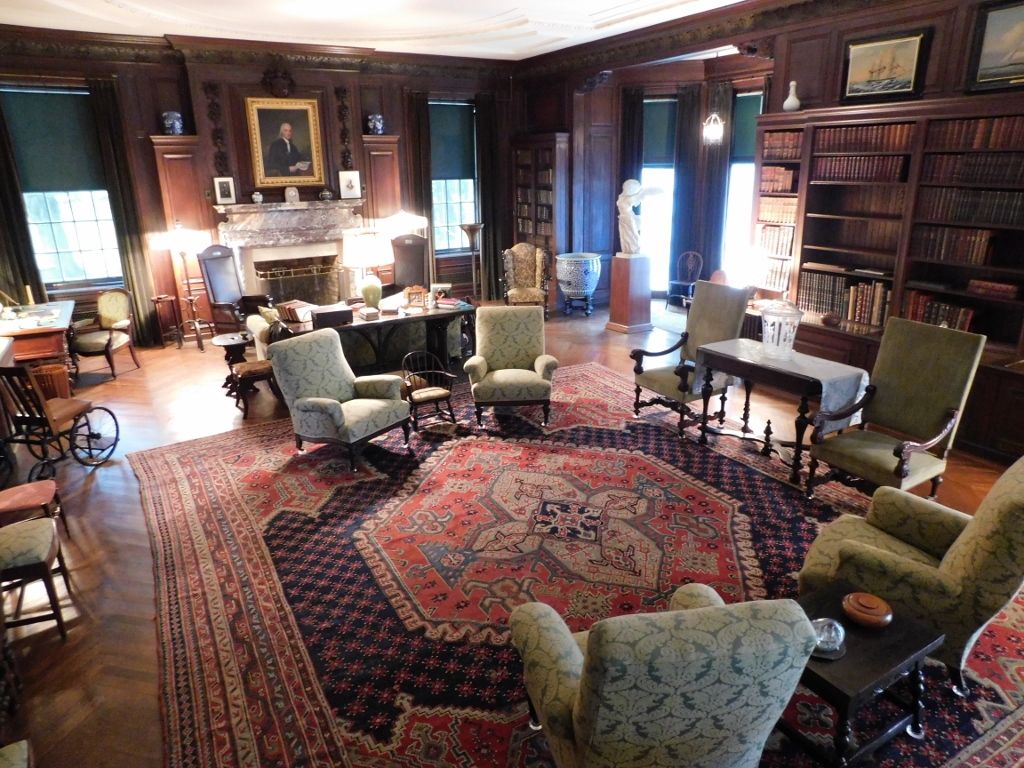 Home of Franklin D. Roosevelt: Library
Home of Franklin D. Roosevelt: Library
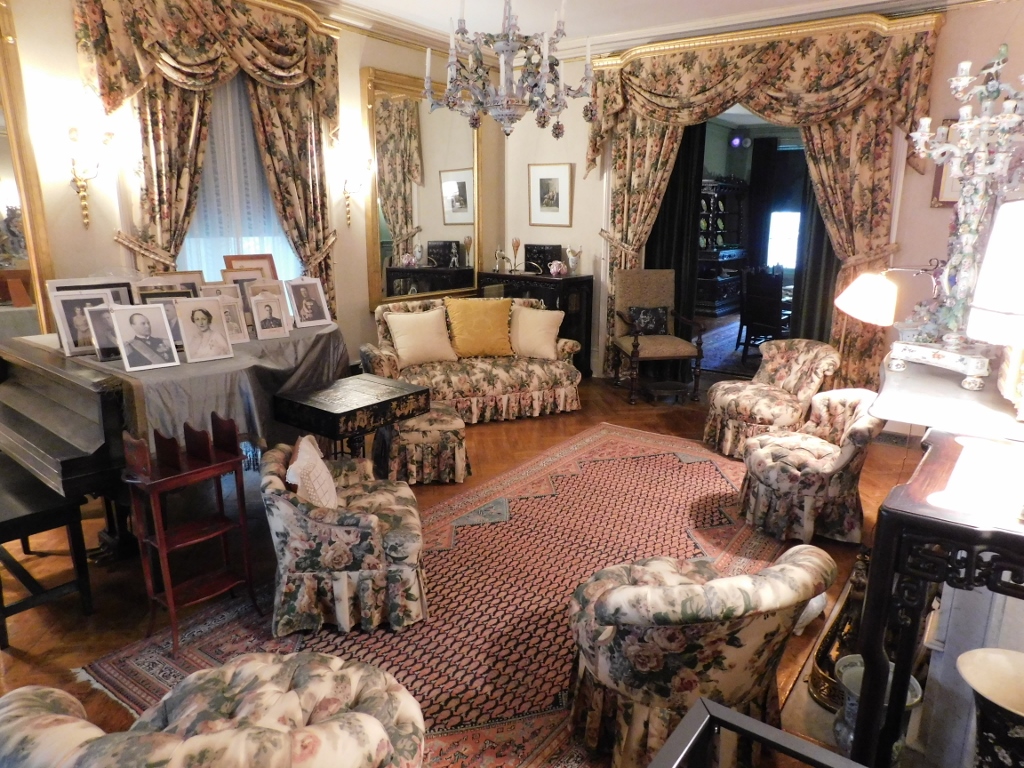 Home of Franklin D. Roosevelt: Music Room
Home of Franklin D. Roosevelt: Music Room
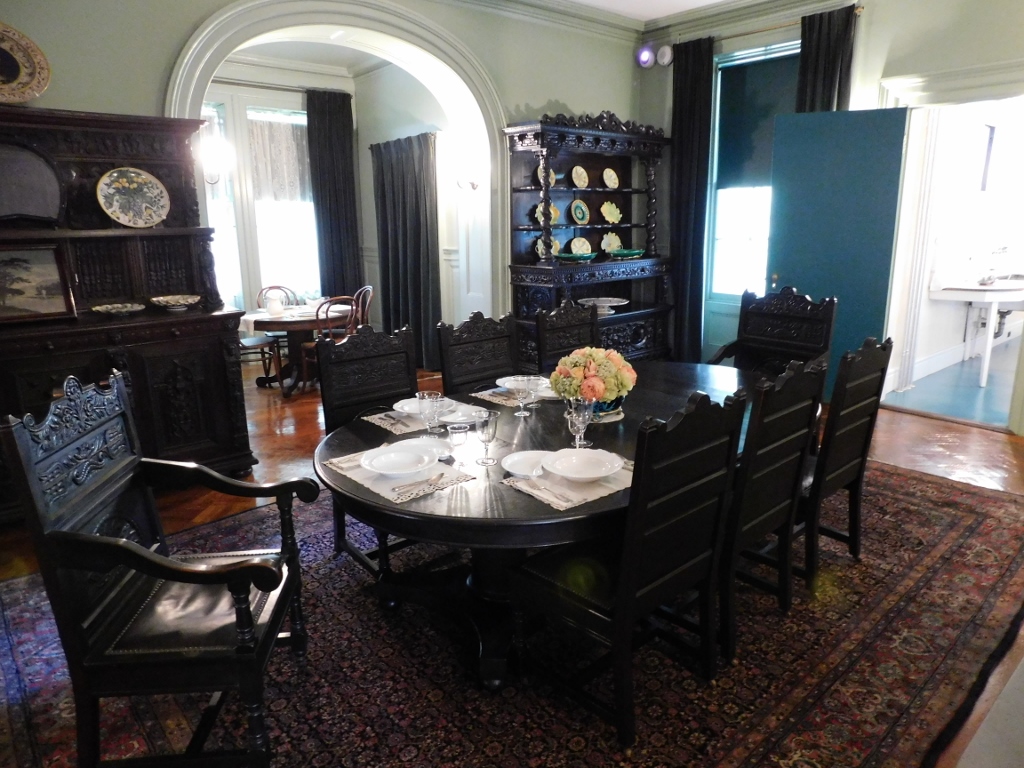 Home of Franklin D. Roosevelt: Dining Room
Home of Franklin D. Roosevelt: Dining Room
After the visit to the ground floor, we climbed up to the first floor where there are several rooms.
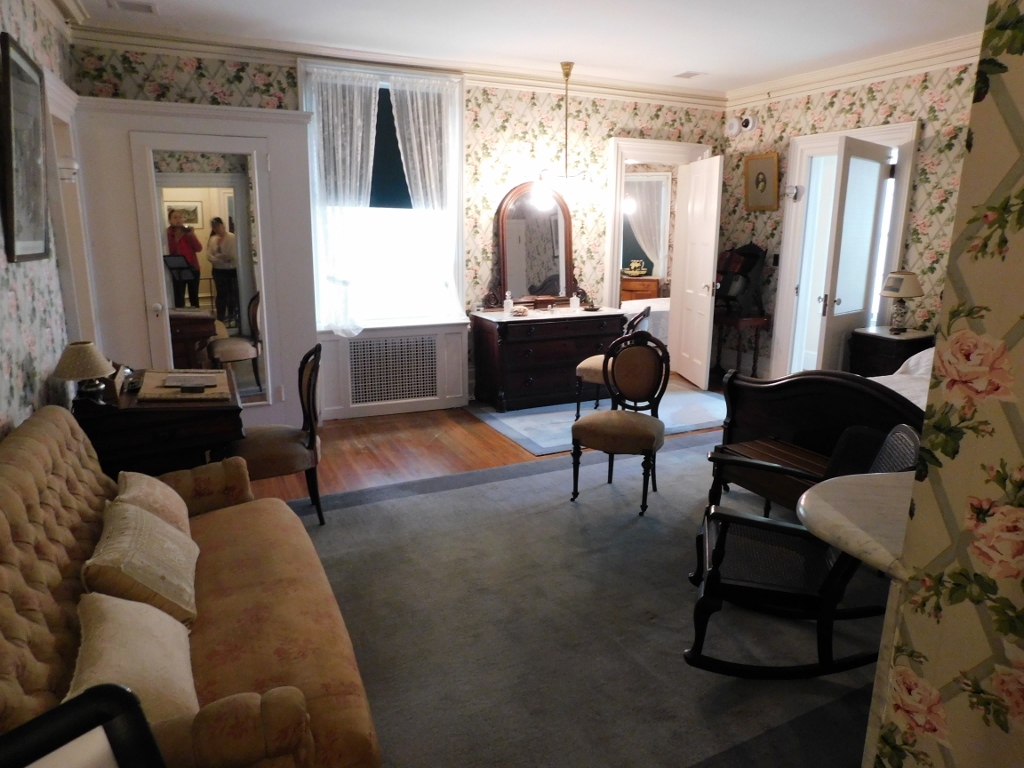 Home of Franklin D. Roosevelt: Pink Room
Home of Franklin D. Roosevelt: Pink Room
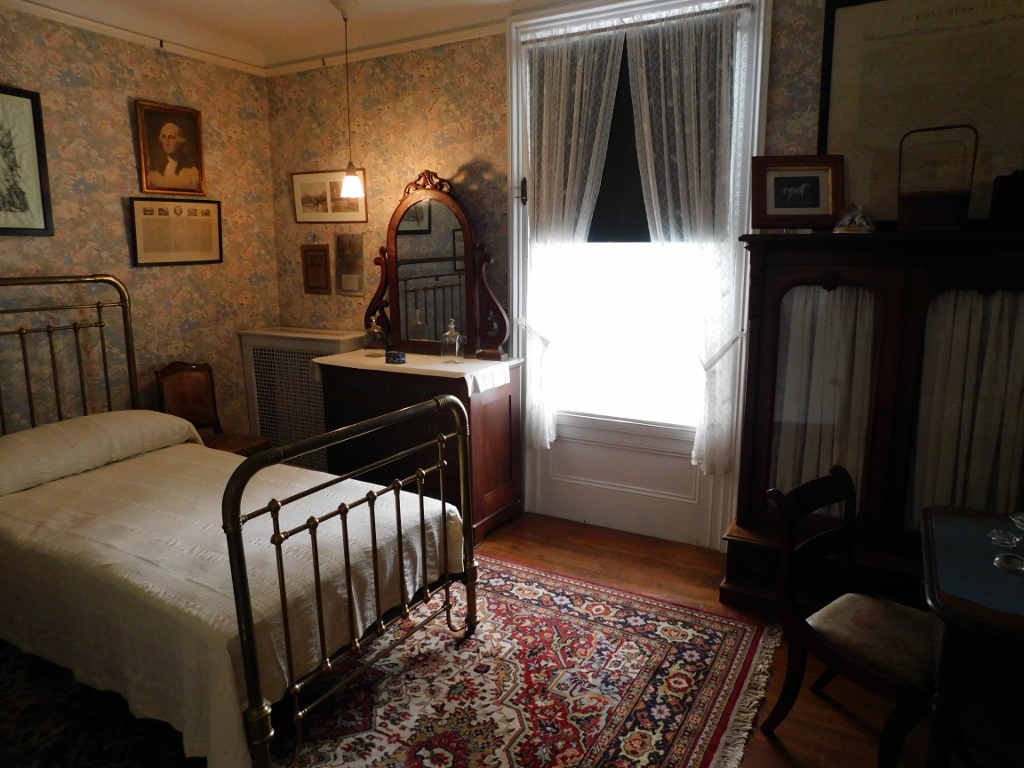 Home of Franklin D. Roosevelt: Boyhood Room
Home of Franklin D. Roosevelt: Boyhood Room
It is interesting that Roosevelt slept in his childhood room until he got married, while his children had their rooms on the second floor.
Here, on the first floor, there are also a couple of guestrooms.
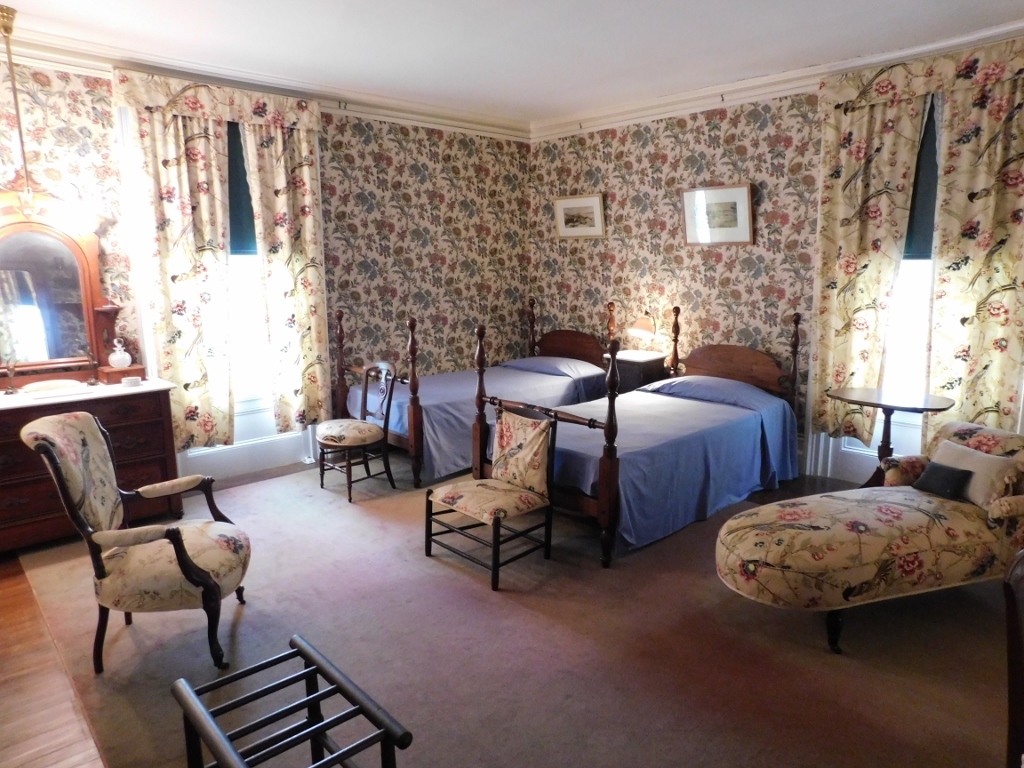 Home of Franklin D. Roosevelt: Chintz Room
Home of Franklin D. Roosevelt: Chintz Room
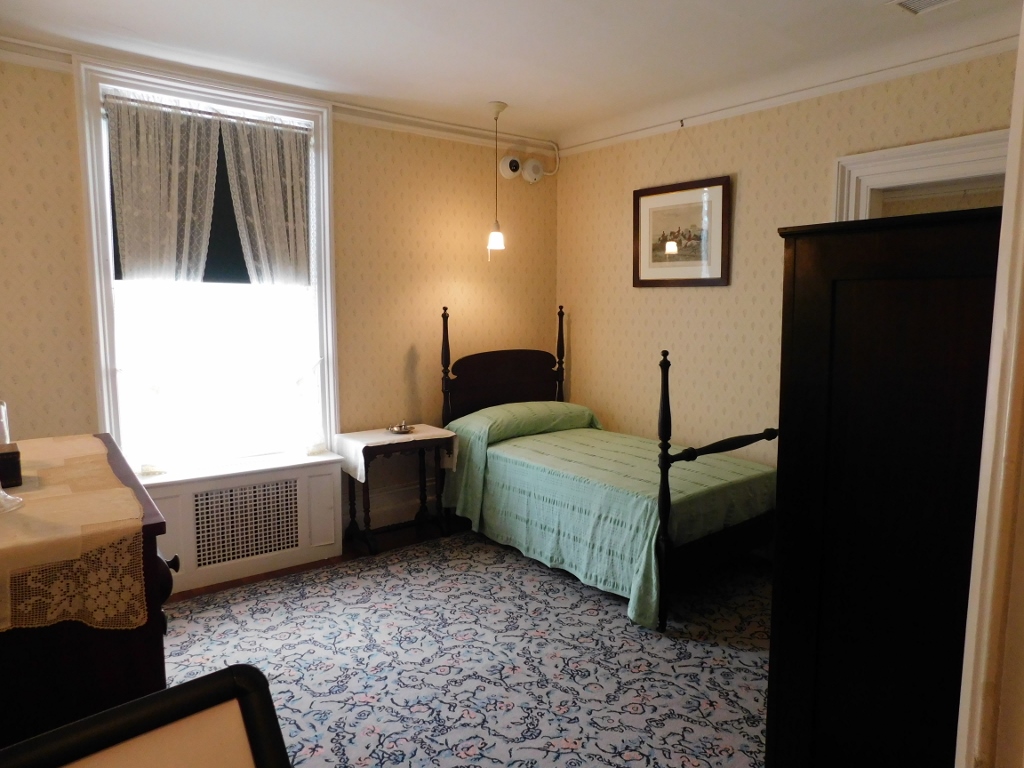 Home of Franklin D. Roosevelt: Guest Room
Home of Franklin D. Roosevelt: Guest Room
The room in the photo below is the room in which Franklin Roosevelt was born. It was later turned into a guestroom, but because of the present museum nature of the whole house, the room had its approximate appearance restored by bringing in the original furniture.
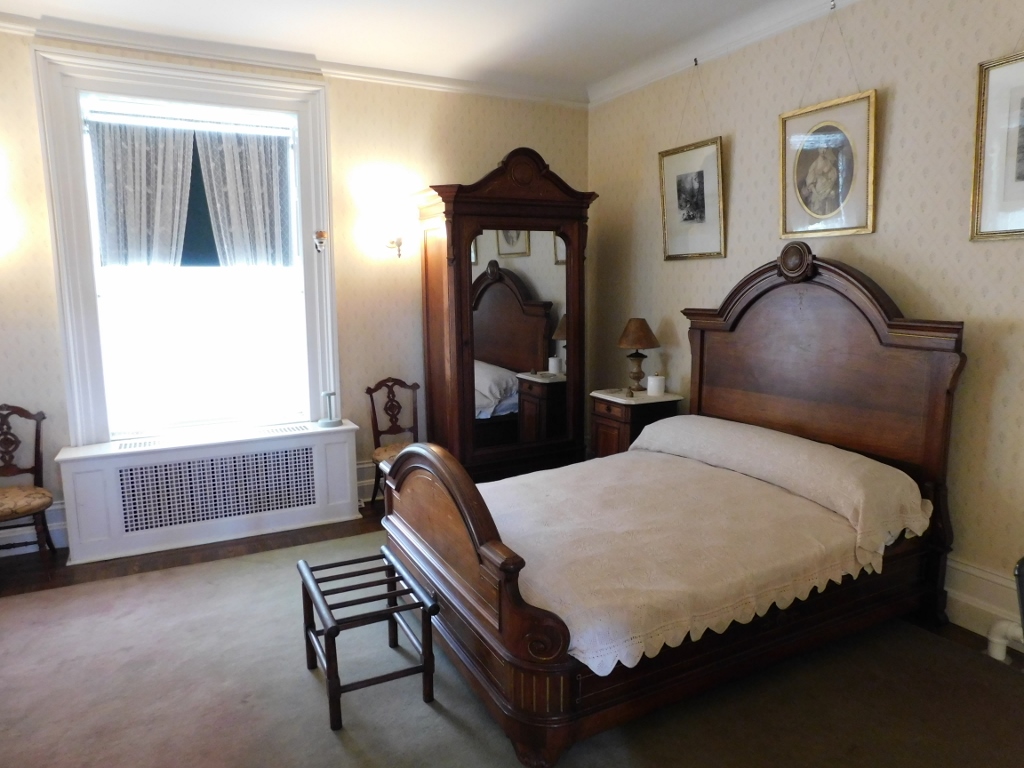 Home of Franklin D. Roosevelt: Blue Room
Home of Franklin D. Roosevelt: Blue Room
And then we got to the south wing where there are three bedrooms (!!!).
Mothers-in-law often tend to meddle in the life of their sons once these get married and then they fight a quiet or an open battle with their daughters-in-law. According to what I have read, this was also the case at the home of Franklin Roosevelt. But, we can leave aside anything there is to read about this on the internet. Suffice to see the arrangement and the size of the rooms here and who was using these rooms. So, on the southwest corner of the first floor there is a room in which Franklin Roosevelt used to sleep and from here he had the lovely view at the Hudson River that he liked so much.
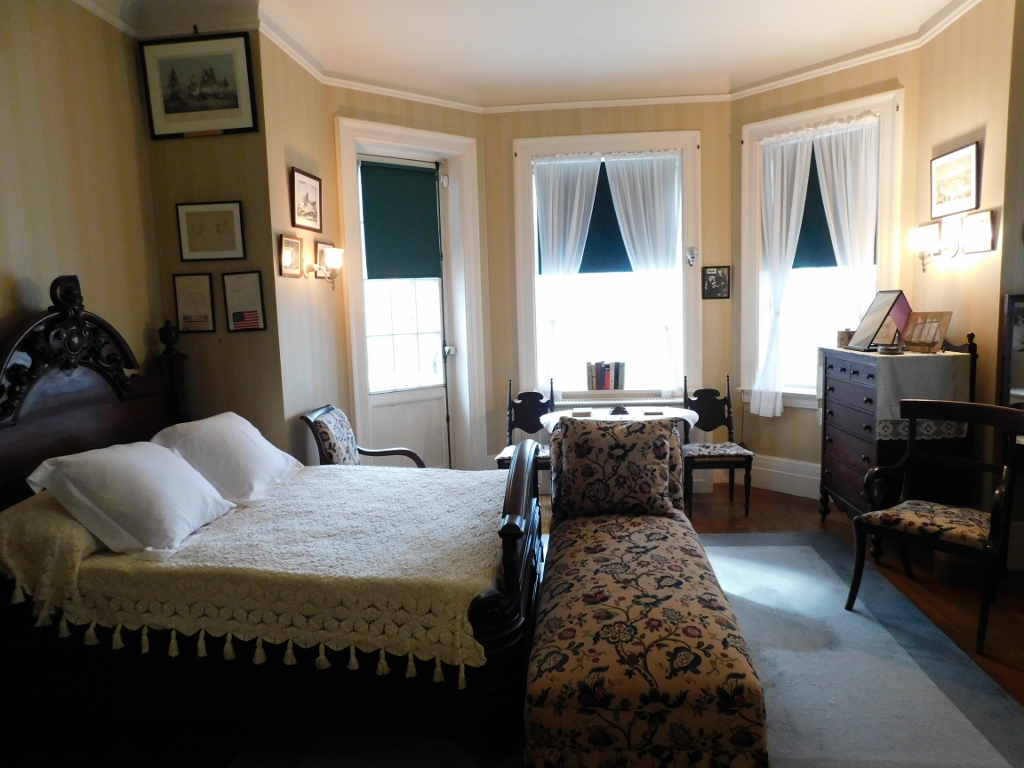 Home of Franklin D. Roosevelt: FDR’s Bedroom
Home of Franklin D. Roosevelt: FDR’s Bedroom
Beside this room, rather squeezed in-between two spacious corner rooms, is the bedroom of the wife of the president – Eleanor Roosevelt.
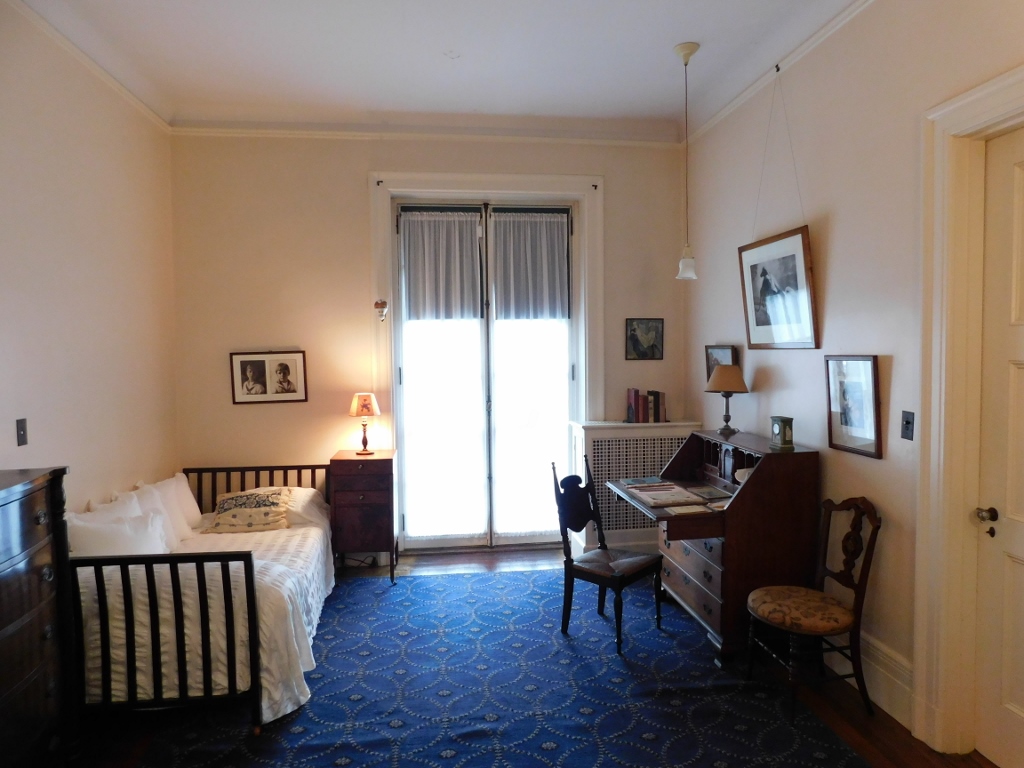 Home of Franklin D. Roosevelt: Eleanor Roosevelt’s Bedroom
Home of Franklin D. Roosevelt: Eleanor Roosevelt’s Bedroom
And on the southeast corner of the first floor there is the bedroom of the mother of Franklin Roosevelt called Sara.
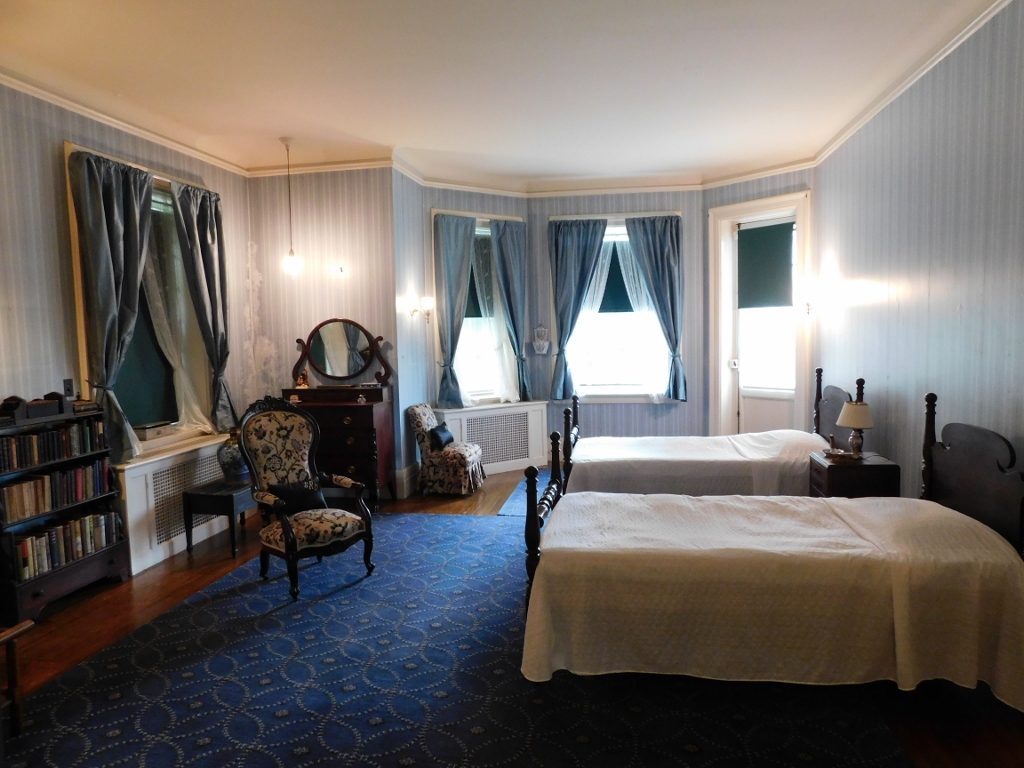 Home of Franklin D. Roosevelt: Sara Roosevelt’s Bedroom
Home of Franklin D. Roosevelt: Sara Roosevelt’s Bedroom
This south wing was added during a major extension of the house in 1915, when Roosevelt was already married. The idea was that there should be two spacious corner rooms on the first floor, with one smaller that would be used as the morning room. Roosevelt’s room was intended for him and his wife, but in 1921 he got polio, which left both of his legs durably paralysed. According to Eleanor herself, she moved to this smaller room in order for the medical staff to be able to take better care of Roosevelt’s needs during the night. Maybe. But, once you see this arrangement and the lack of proportion, I can’t help but think that the battle was after all won by – the mother-in-law.
Be as it may, this is where the tour of Franklin Roosevelt’s home ended. While coming down from the floor using an exterior staircase, I could admire once again the truly beautiful view in the direction of the Hudson River.
 Home of Franklin D. Roosevelt National Historic Site, a detail
Home of Franklin D. Roosevelt National Historic Site, a detail
Now I continued only to go around the house from the outside and peep in here and there, and so I came to an interesting room.
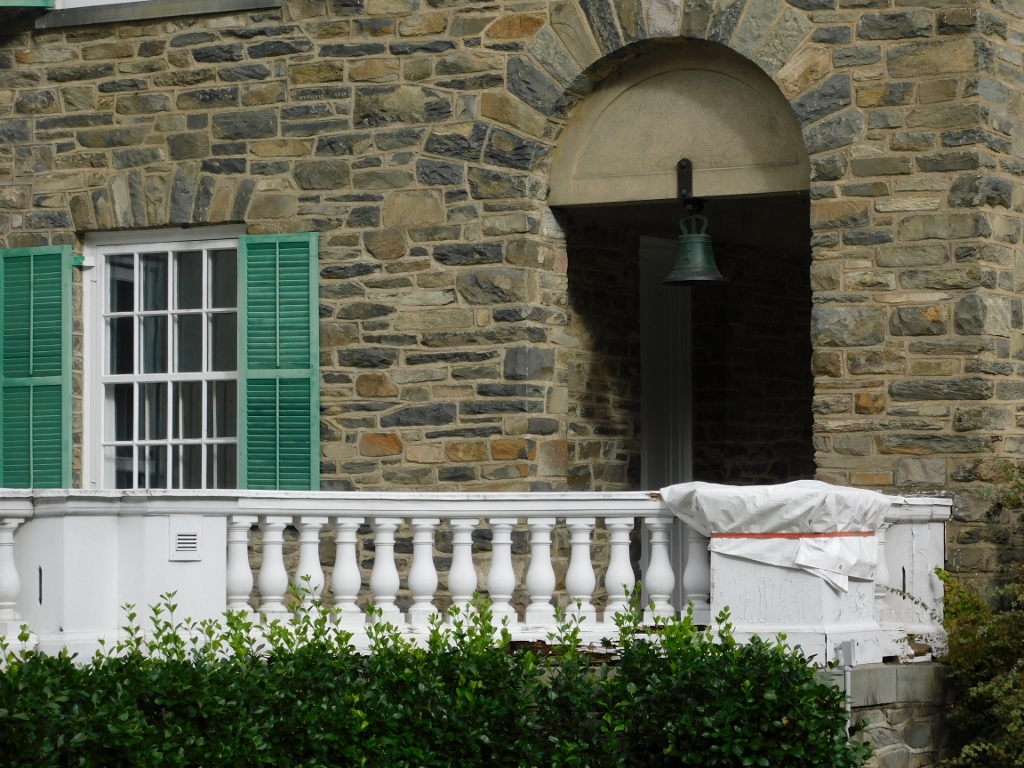 Home of Franklin D. Roosevelt National Historic Site, a detail
Home of Franklin D. Roosevelt National Historic Site, a detail
Namely, the photo above shows a part of the house where Roosevelt’s study was. As the story goes, this is the room in which Roosevelt and Churchill initialled a document that laid down the ground for the cooperation between the USA and the UK as regards the development of the atomic bomb. The rest is history...
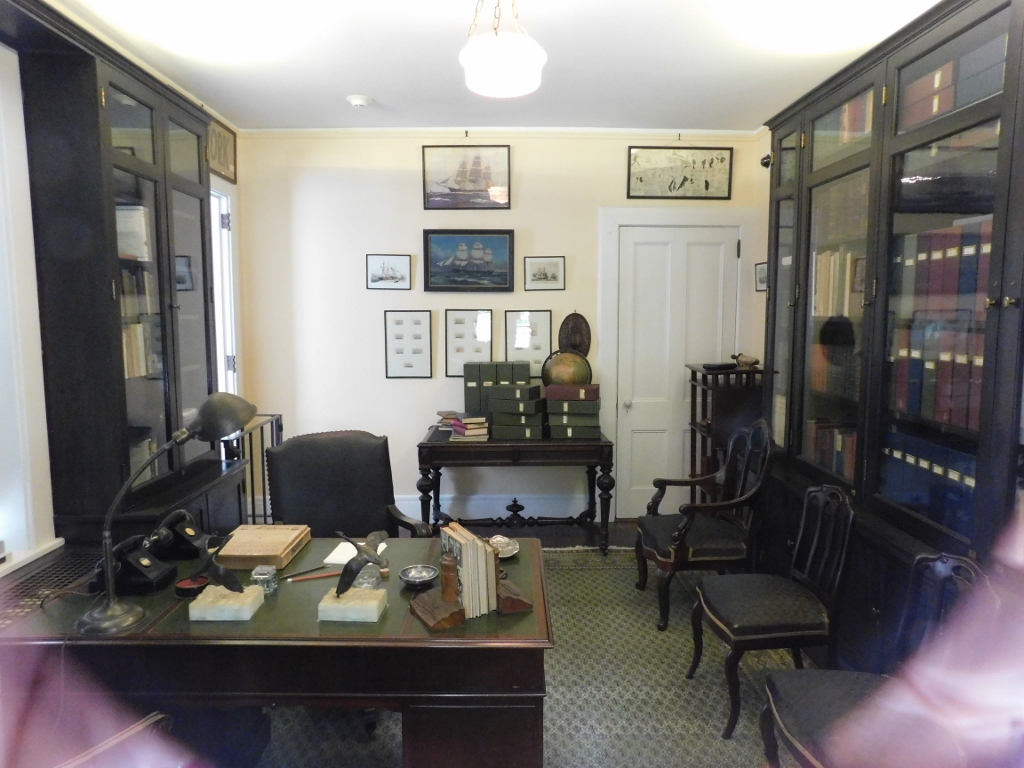 Home of Franklin D. Roosevelt National Historic Site, the President’s Study
Home of Franklin D. Roosevelt National Historic Site, the President’s Study
After this, Daniela and I returned to the car and continued a dozen kilometres south to the town of Poughkeepsie. Because of some confusing signs by the road we did wander a little and even crossed to the west bank of the Hudson, but this was not a big problem because in this way we got to the very bank of the river from where we had a lovely view at two bridges. One is for vehicles, while the other one used to be used for the railway and is today a pedestrian bridge. It was precisely the latter that was our proper destination.
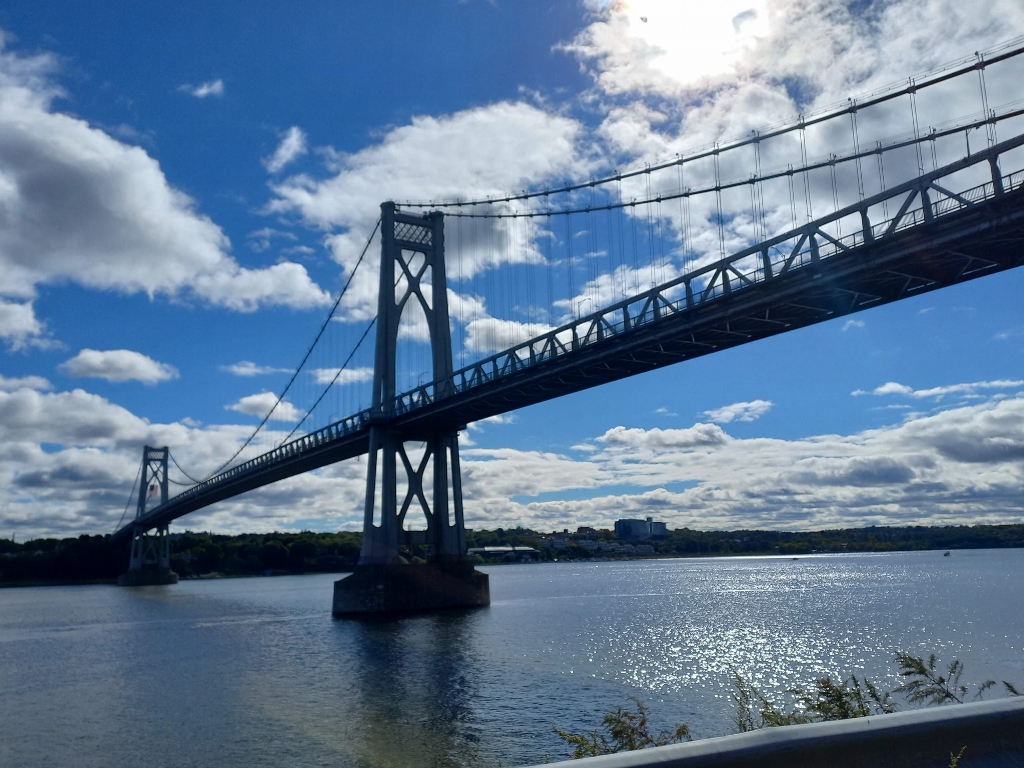 Mid-Hudson Bridge for road traffic
Mid-Hudson Bridge for road traffic
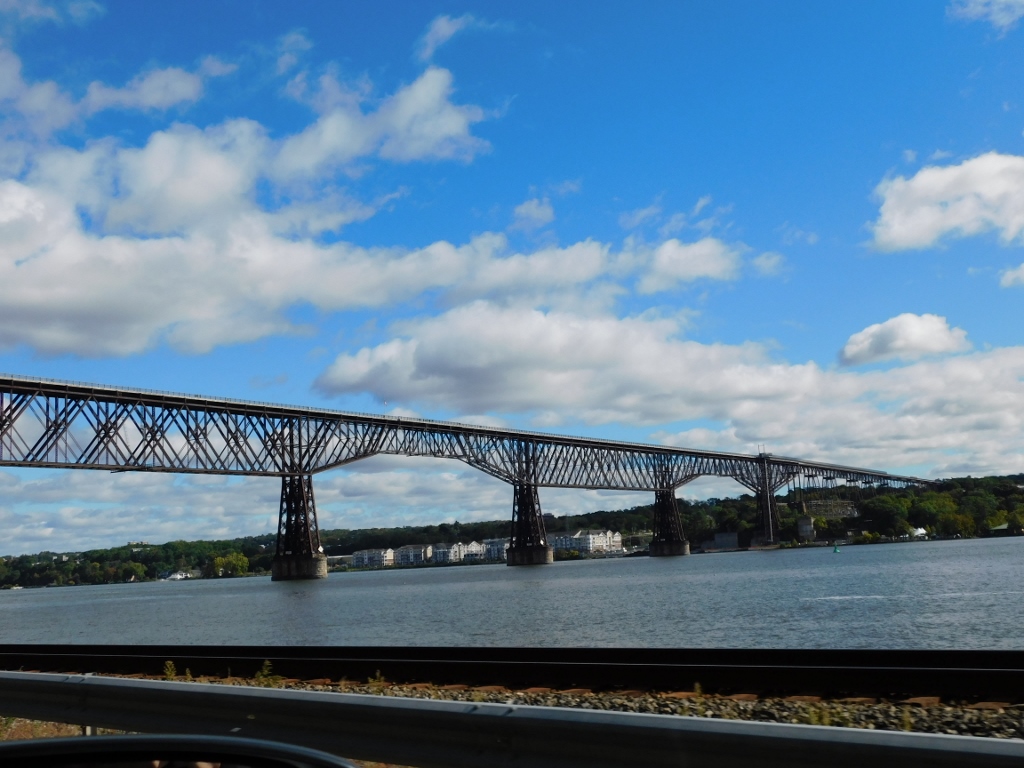 Walkway Over the Hudson
Walkway Over the Hudson
So, after some driving around, we did reach the proper place, a parking lot on the east side of the Hudson within the town of Poughkeepsie and from there we continued on foot.
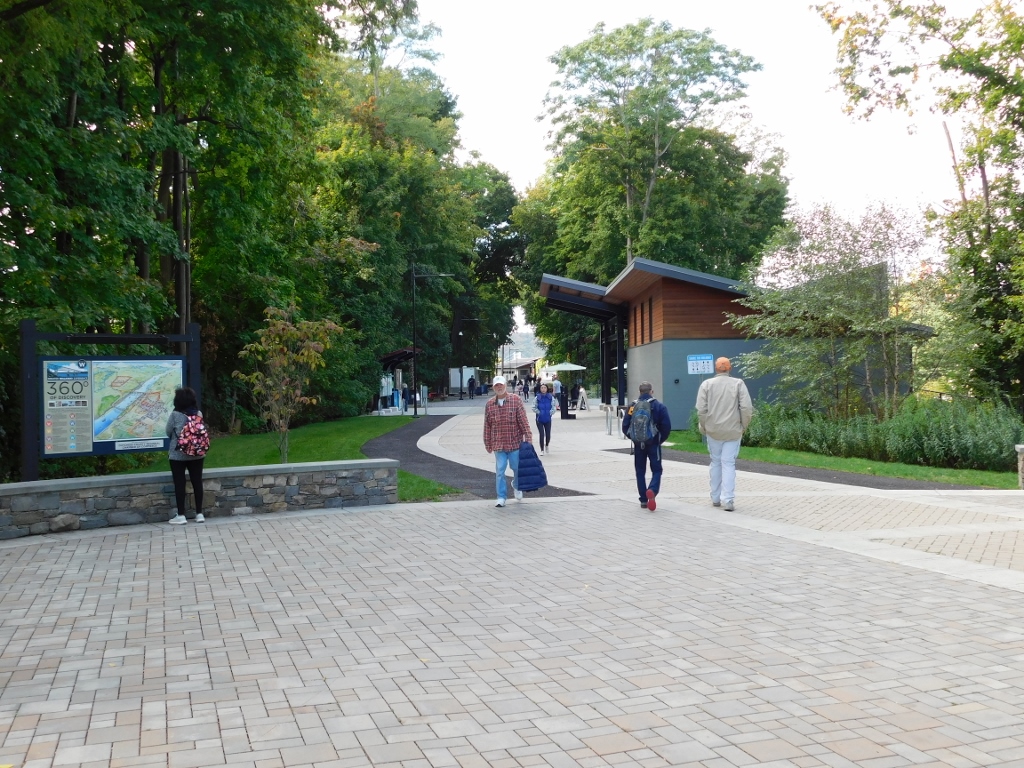 Access to the Walkway Over the Hudson
Access to the Walkway Over the Hudson
This is the Walkway Over the Hudson State Historic Park. As I’ve mentioned, the bridge where there is a walkway was originally built as a railroad bridge back in 1889 and it served this function until 1974.
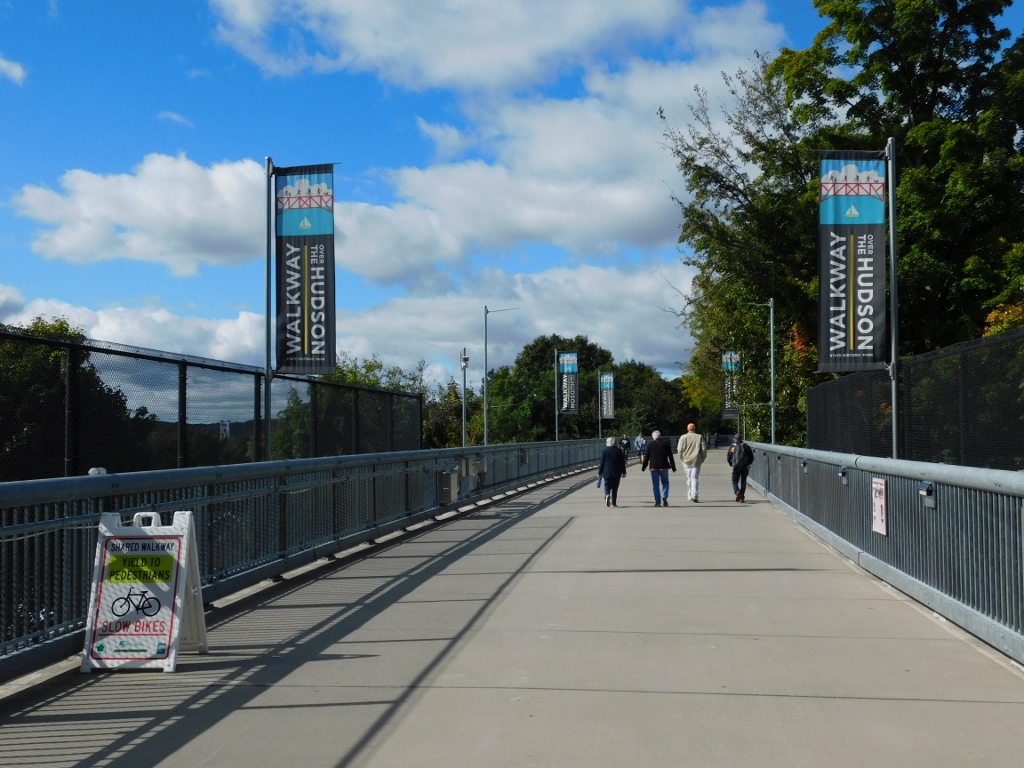 Walkway Over the Hudson
Walkway Over the Hudson
It was reopened in 2009, but this time as a pedestrian bridge with the total length of 2063 m, while its height above the Hudson is 65 m.
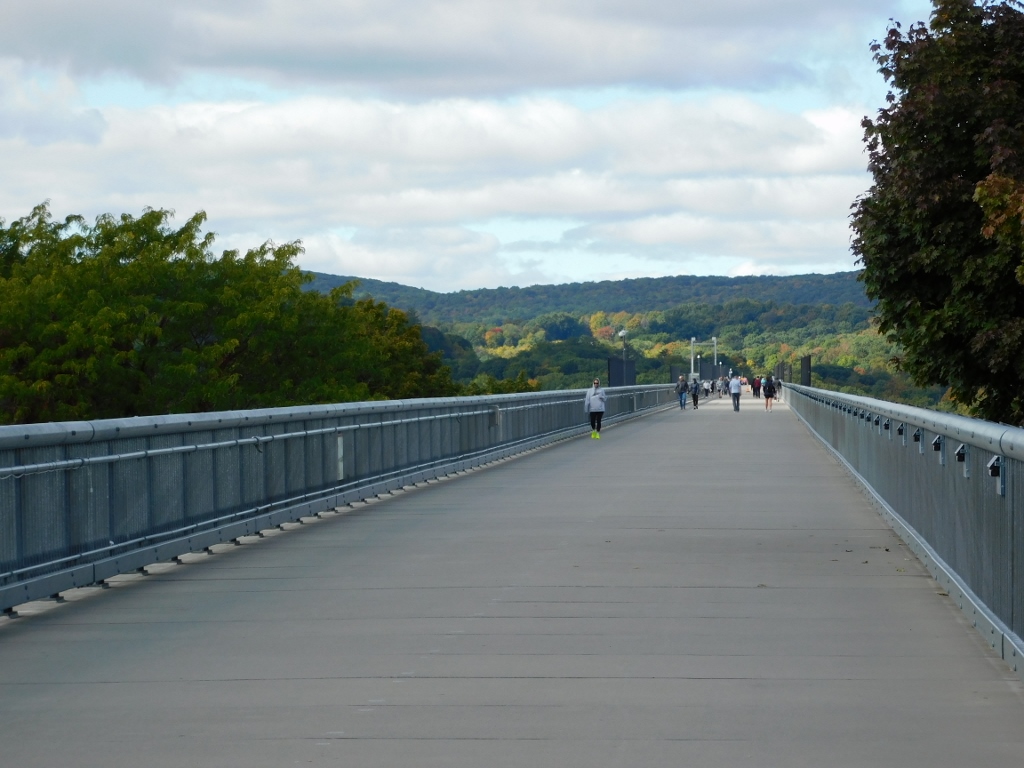 Walkway Over the Hudson
Walkway Over the Hudson
I must admit that neither Daniela nor I knew about this bridge, but the previous day, during our visit to the Vanderbilt Mansion, with a lot of luck we came across a very nice American woman with whom we started to chat and it was precisely she who recommended this walk. A major thanks goes to her!
Although we had a rather limited time on this day, the agreement was to get to the bridge and then go for a walk there. Still, all the time we had to look at our watches, so eventually we did not even get to the other side of the Hudson, but the experience was absolutely great nonetheless. The photographs speak for themselves.
 North view from the Walkway Over the Hudson
North view from the Walkway Over the Hudson
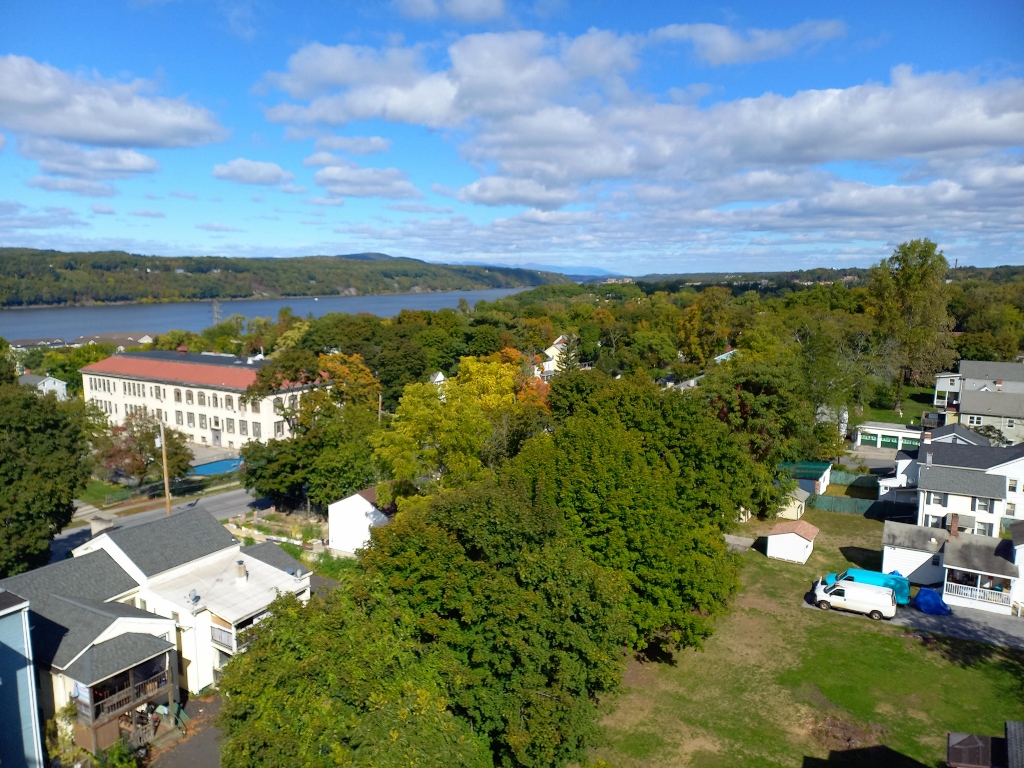 North view from the Walkway Over the Hudson
North view from the Walkway Over the Hudson
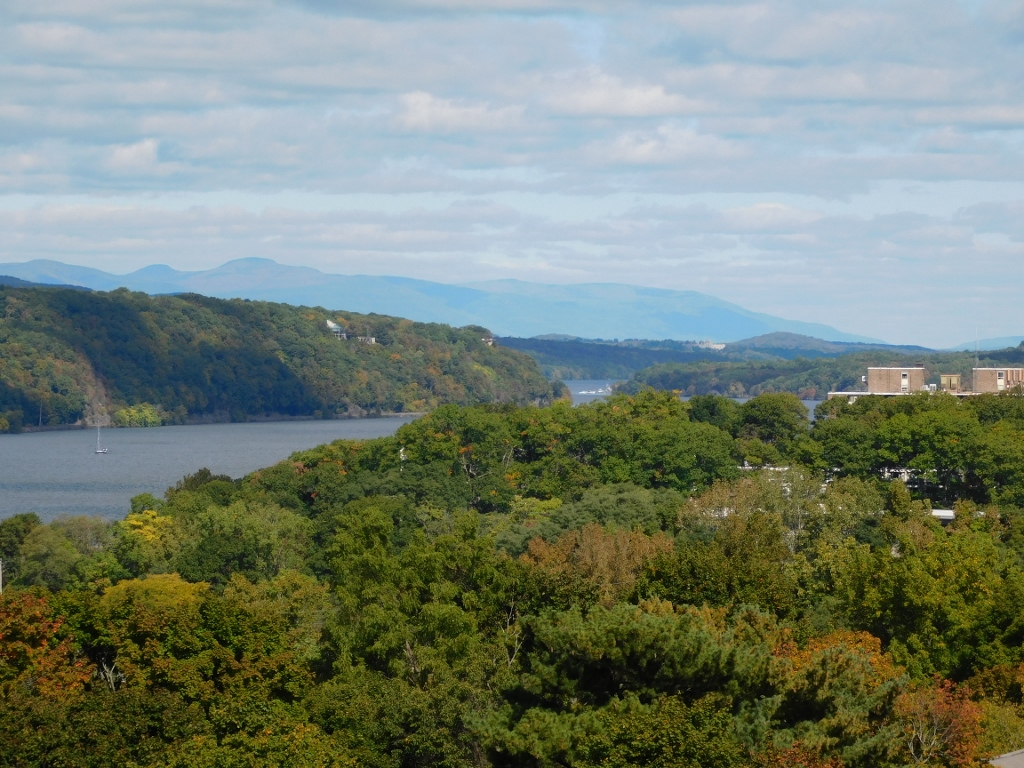 North view from the Walkway Over the Hudson
North view from the Walkway Over the Hudson
 North view from the Walkway Over the Hudson
North view from the Walkway Over the Hudson
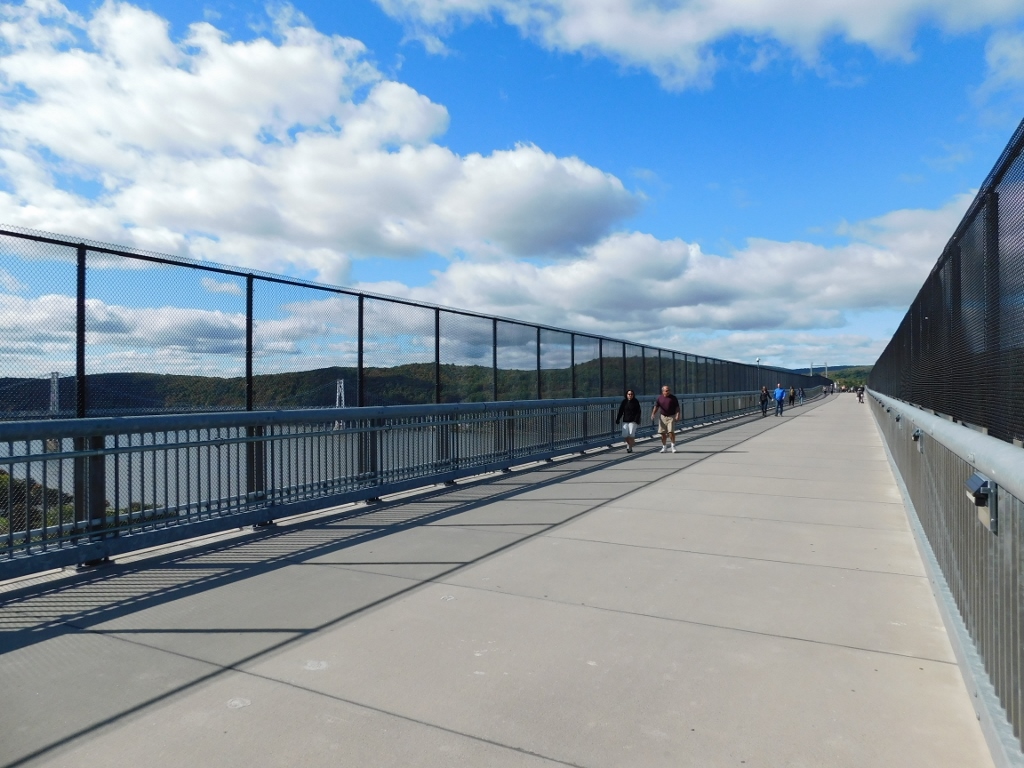 Walkway Over the Hudson
Walkway Over the Hudson
 North view from the Walkway Over the Hudson
North view from the Walkway Over the Hudson
 North view from the Walkway Over the Hudson
North view from the Walkway Over the Hudson
While I was (unsuccessfully) trying to make a good selfie, my friend took the opportunity and made a photo of me with her mobile phone. I am glad that she caught me in such a jovial mood and exceptionally content that we did come to such a fantastic place.
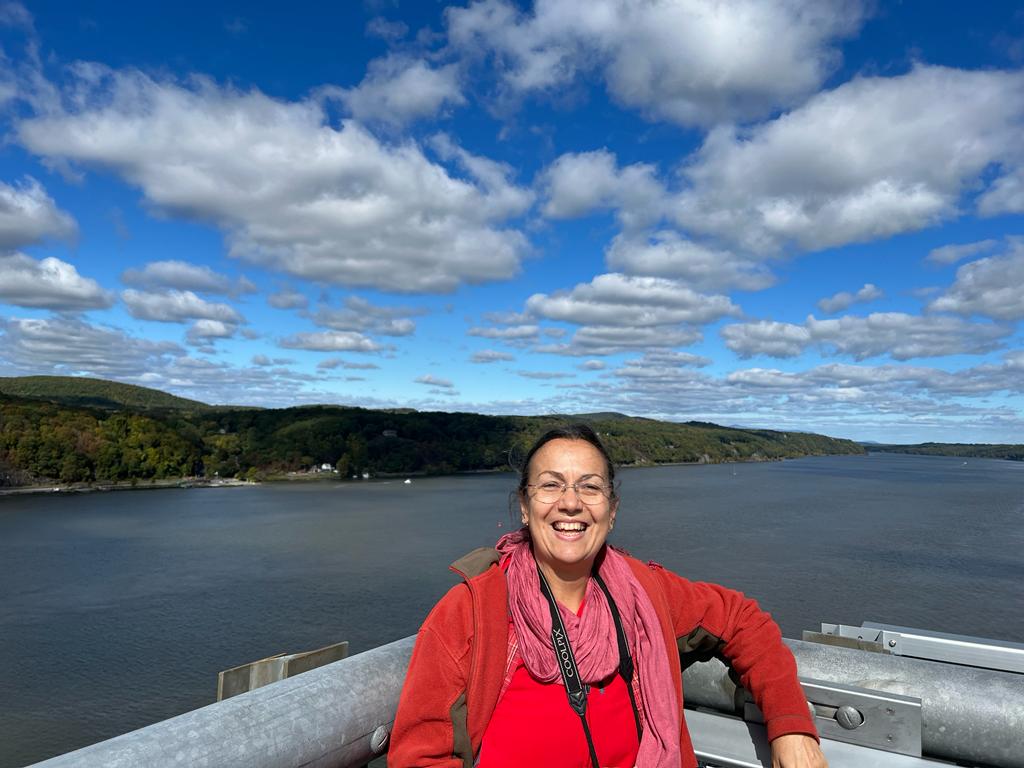 Joy at the Walkway Over the Hudson (Photo by: DAJP)
Joy at the Walkway Over the Hudson (Photo by: DAJP)
And then we walked some more.
 Walkway Over the Hudson
Walkway Over the Hudson
 North view from the Walkway Over the Hudson
North view from the Walkway Over the Hudson
So, we did not have enough time to reach the other bank of the Hudson River, but it is interesting that the bridge is open throughout the year, from 7 am until the sunset. When we were here, the weather was fabulous, sunny autumn weather and not too cold, but I believe that a walk over the bridge and the views can be very interesting even when the weather is not this fine.
 Walkway Over the Hudson
Walkway Over the Hudson
On our way back, I paid more attention to the south side of the bridge and the sights that can be seen from there.
 South view from the Walkway Over the Hudson
South view from the Walkway Over the Hudson
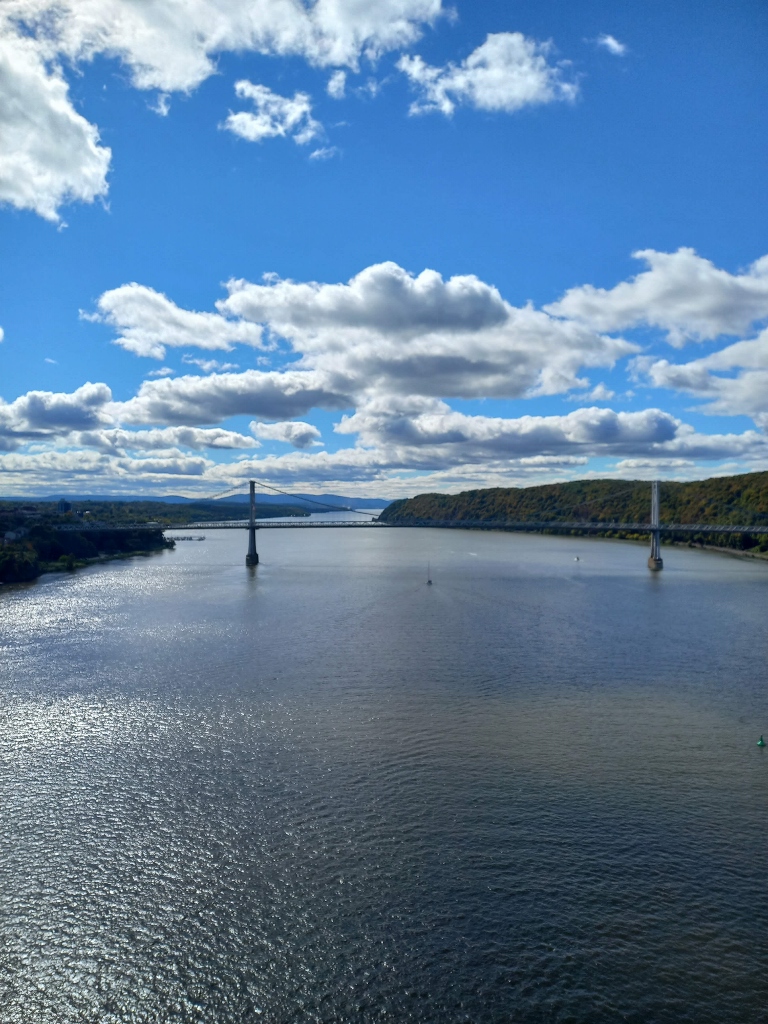 South view from the Walkway Over the Hudson
South view from the Walkway Over the Hudson
Before returning to New York City and the rent-a-car company close to the airport from which my friend Daniela had a flight, we only stopped by one place to buy coffee to go, as well as a slice of a lemon cake recommended to me by Daniela. It was really very good.
I’m not sure if the taste of my version of lemon cake is just like the one we ate in the car along our way, but I’m sure it has no additives which must be abundant in the shop-bought cake (by the way, I did not mind this at all; on the contrary, I enjoyed in every morsel of the taste contributed to by these additives). So, this brings me to my recipe for – Lemon Cake served on a small plate with a gingko motif. In this way, as many as two things reminded me of this journey and my friend.
 Lemon cake served on a plate I made and decorated myself
Lemon cake served on a plate I made and decorated myself
LEMON CAKE
- 4 eggs that must be measured (!), of course after being broken and put into a bowl
- the same weight of butter
- the same weight of caster sugar
- the same weight of all-purpose flour
- 1 tsp of baking powder
- a little milk
- zest of one lemon
- juice of one lemon
The butter and caster sugar should be mixed very well until fluffy and the sugar has dissolved. Eggs are added, one by one, and after the third one you should also add a little flour to keep the batter smooth. After all the eggs, you add the rest of the flour with the baking powder. The batter is loosened slightly with some milk and finally you add the zest and juice of one lemon combining it all nicely. Put it in a round baking tin and bake at 170 degrees C.
Once the cake cools down, it should be covered by a glaze made from the following ingredients: 45 g of butter, 190 g of icing sugar, juice of 1 lemon. The butter should be melted and then the rest of the ingredients added. It should all be mixed well in order to make sure there are no lumps of sugar.
This is as far as the cake is concerned and as for Daniela and I...
Soon we arrived in New York and not long after, following a few wonderful days we spent together, we parted.
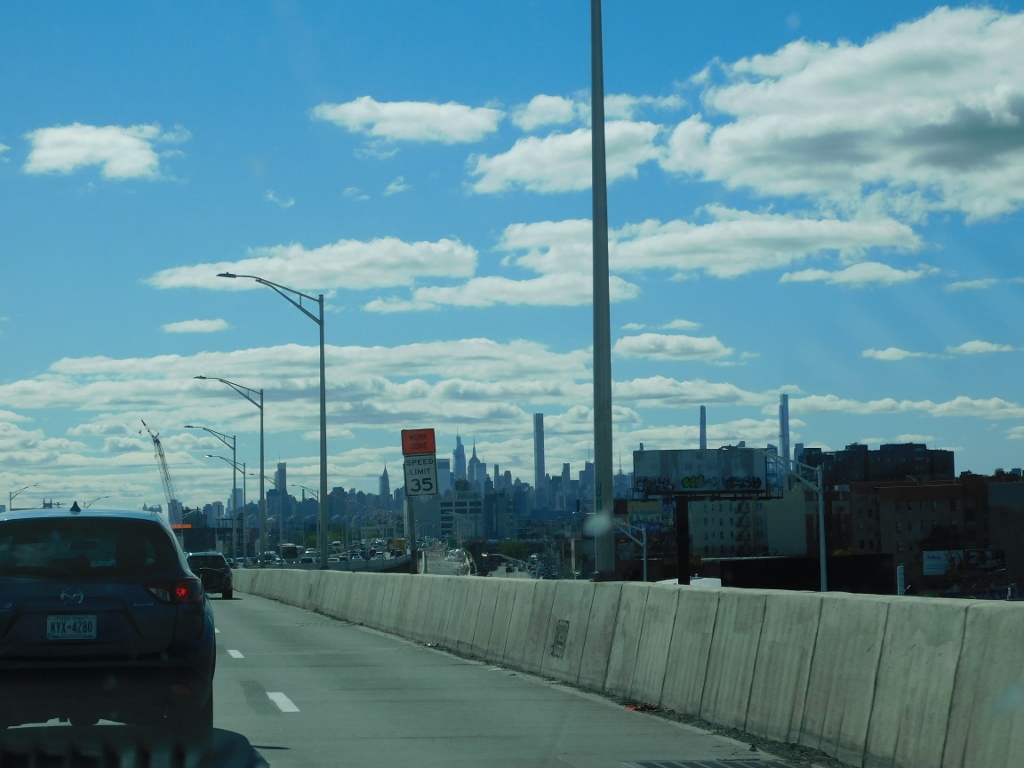 Return to New York
Return to New York
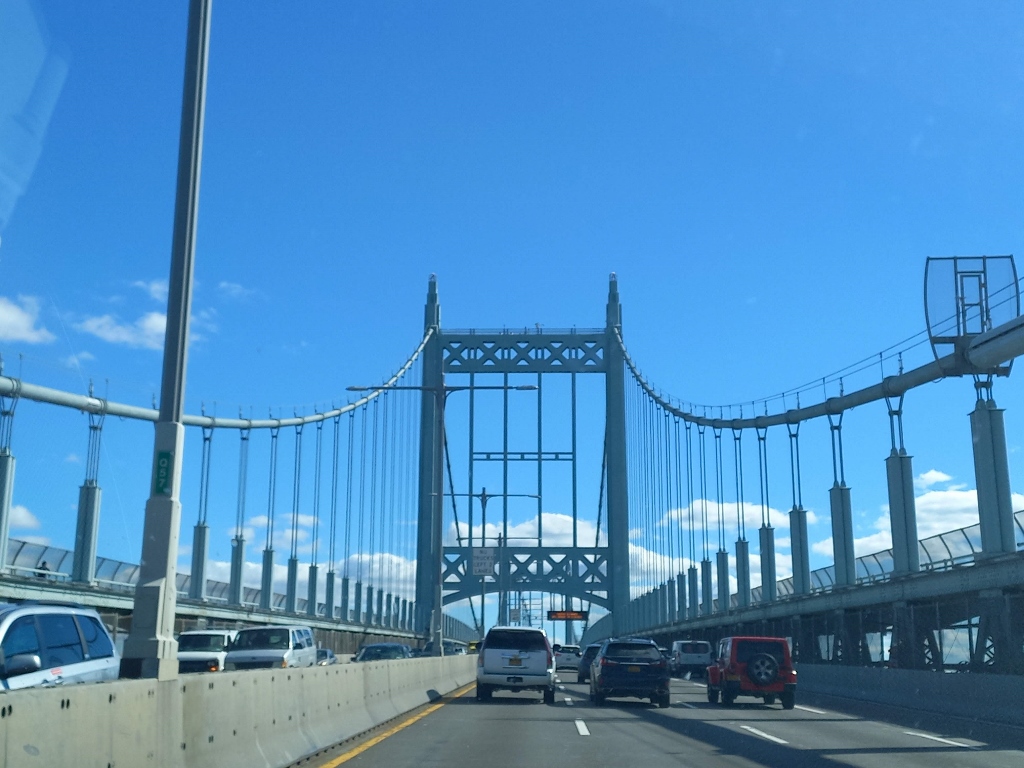 Return to New York
Return to New York
That parting was quick because we arrived in the nick of time, so Daniela had to rush in order to catch her plane. But, we exchanged proper greetings by phone later on, while she returned back to her wonderful family the same night.
Here is again the map that shows what we visited during this tour.